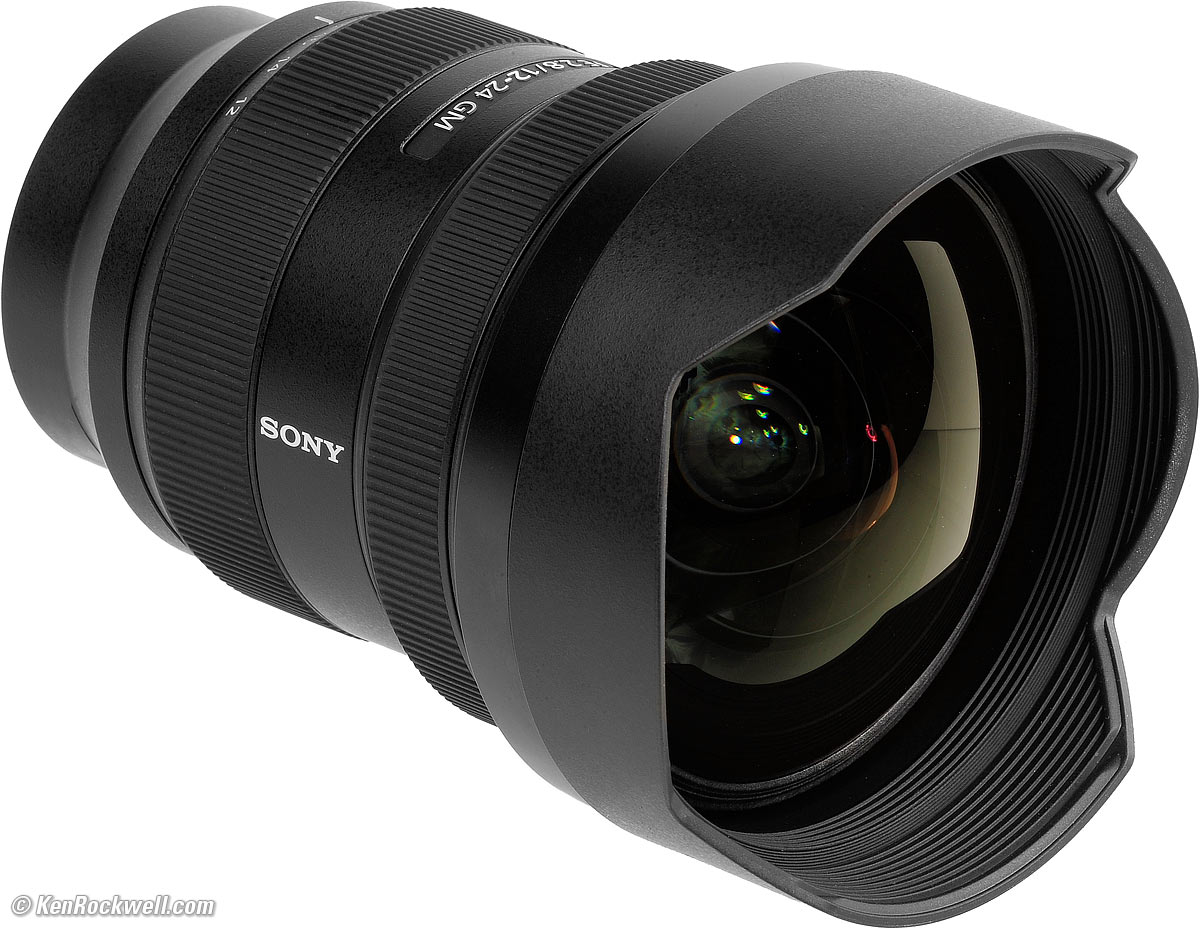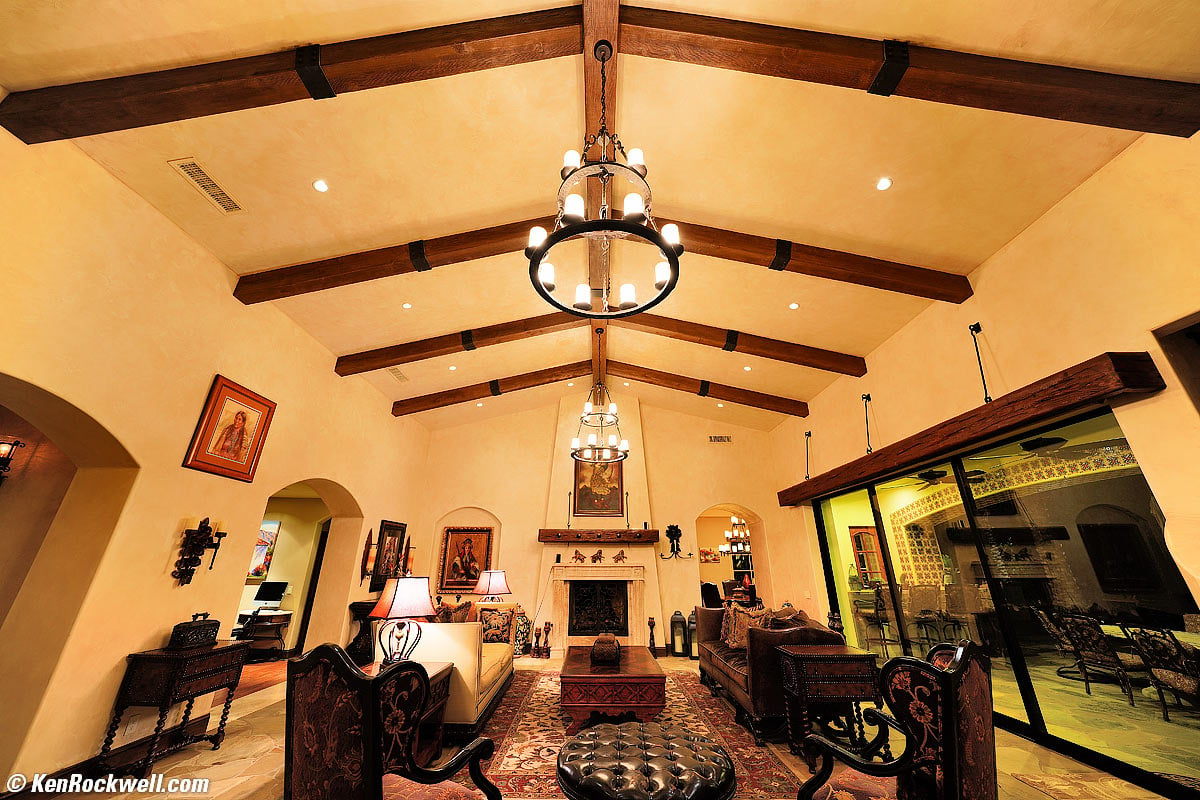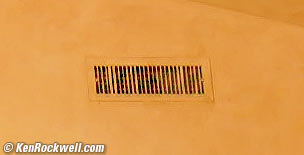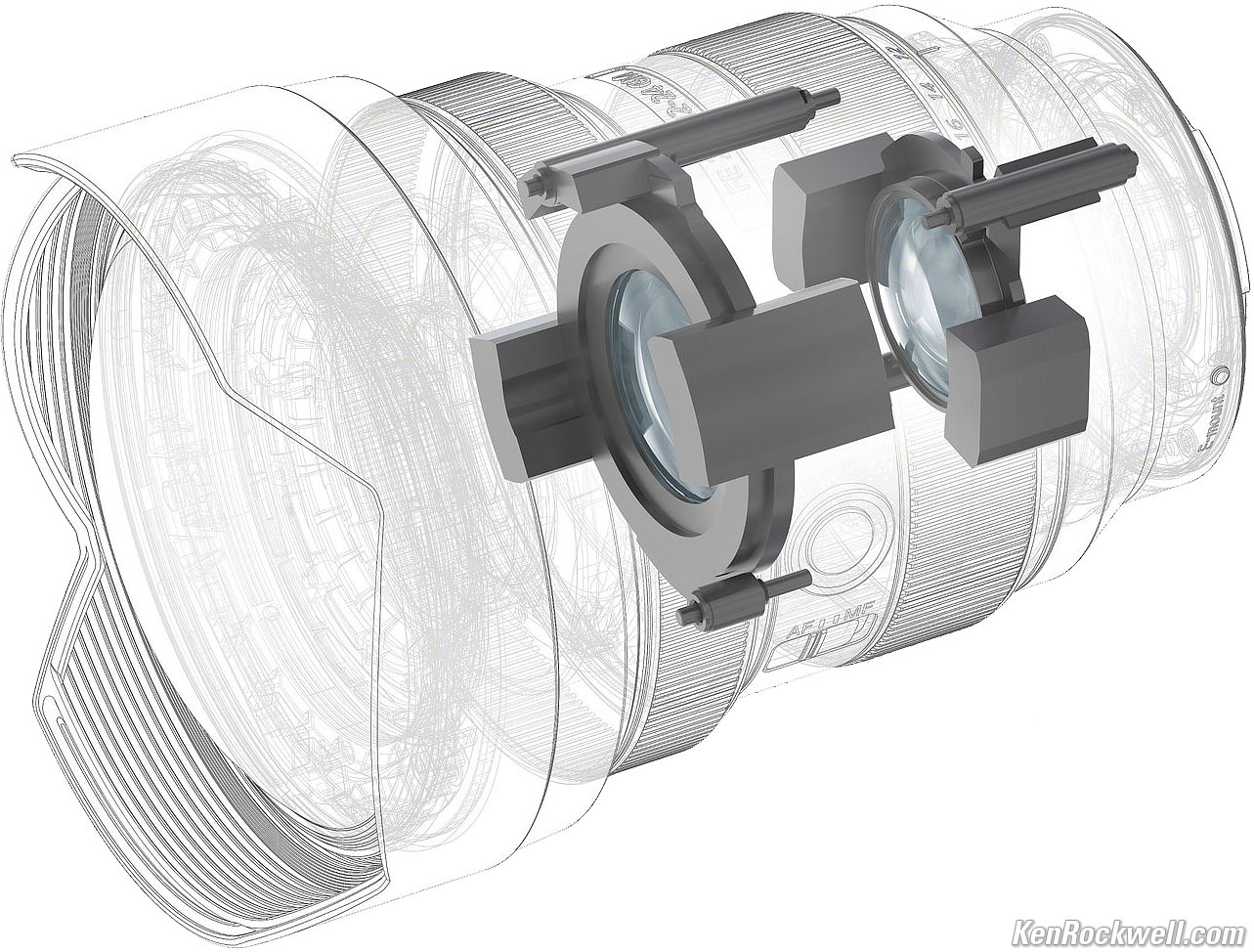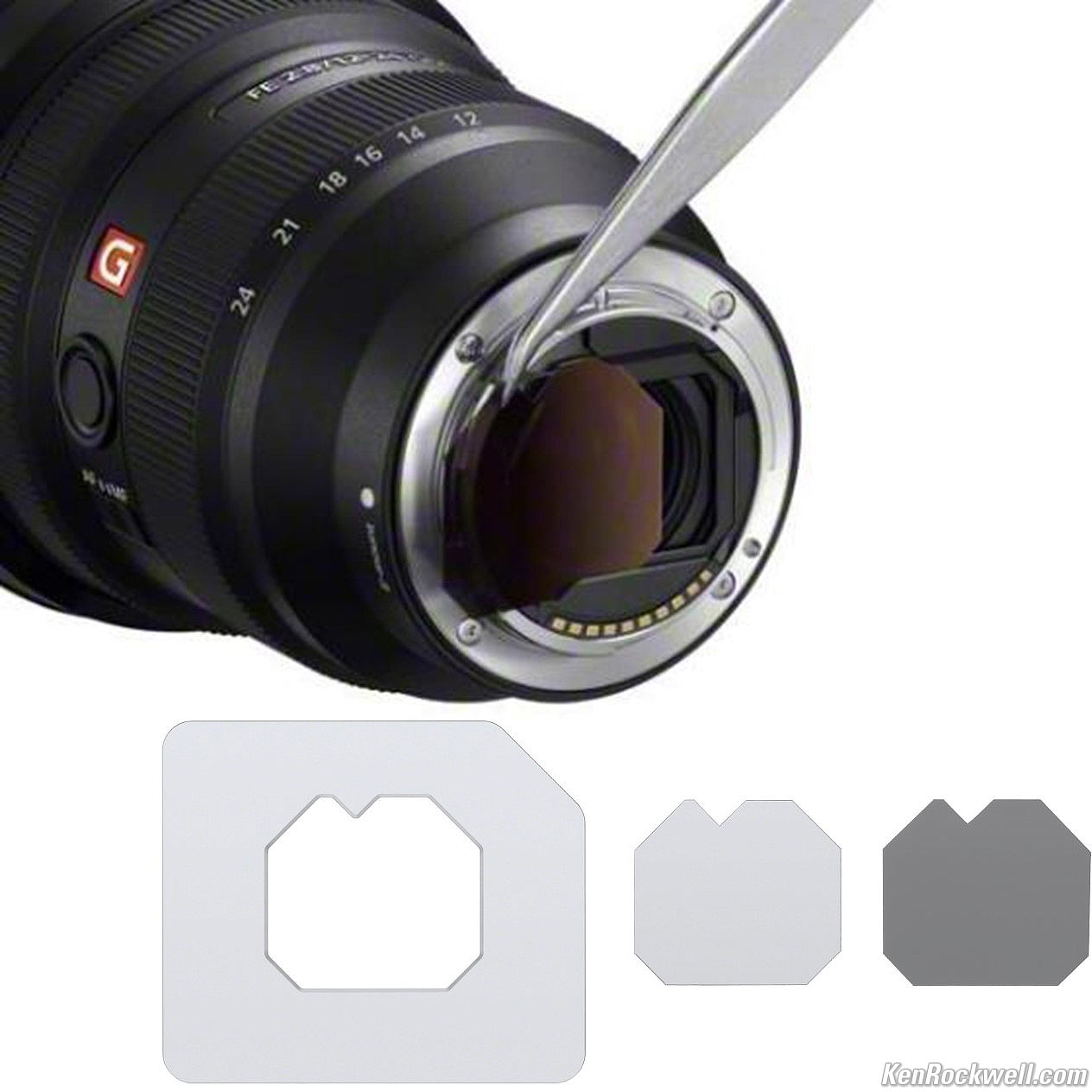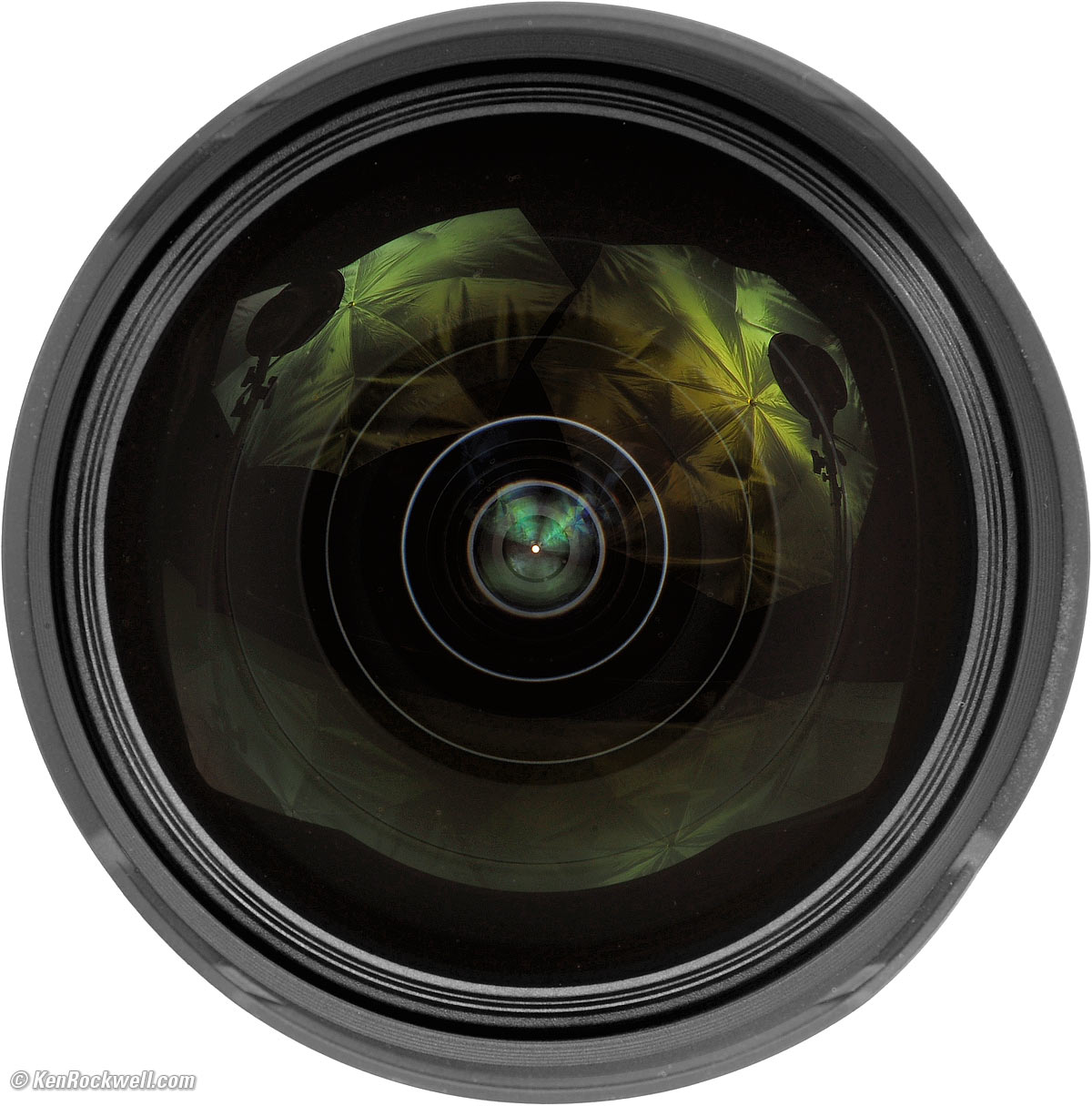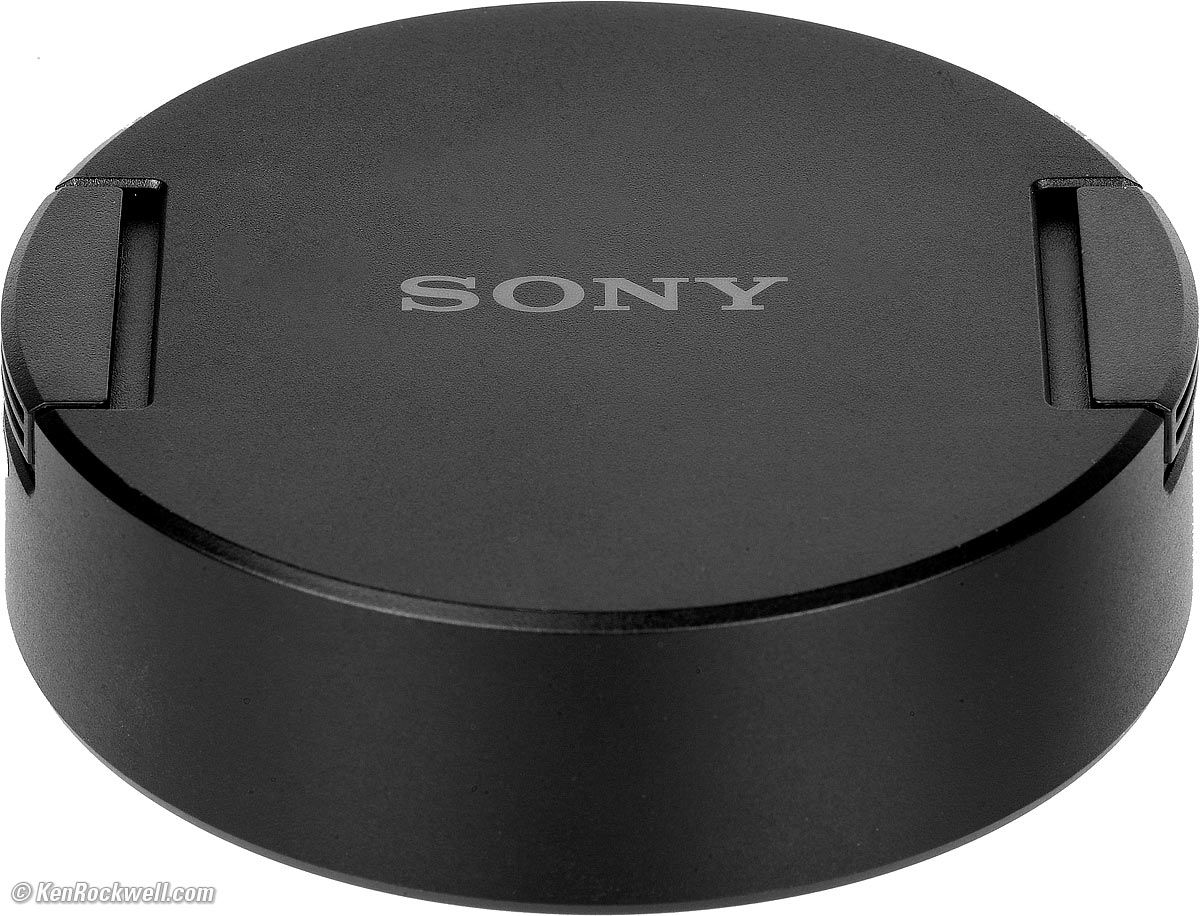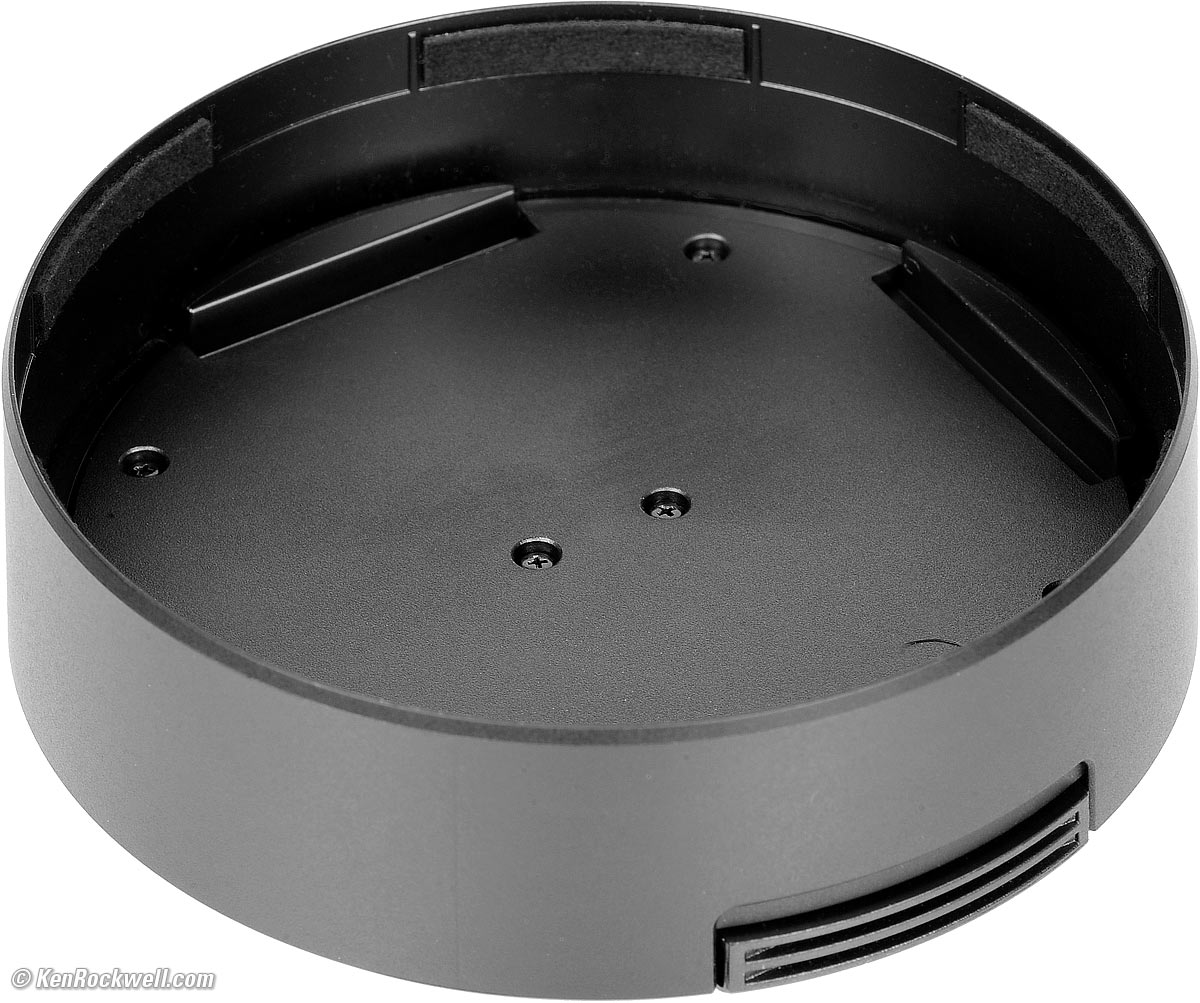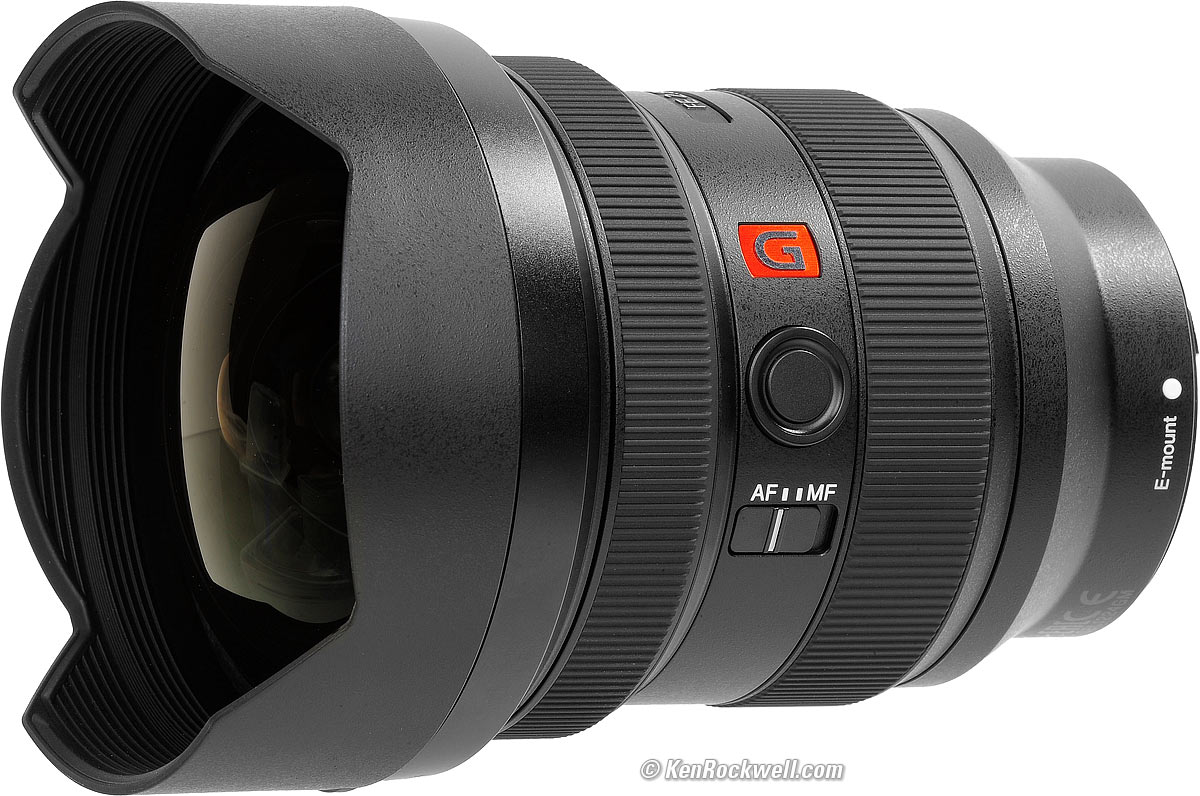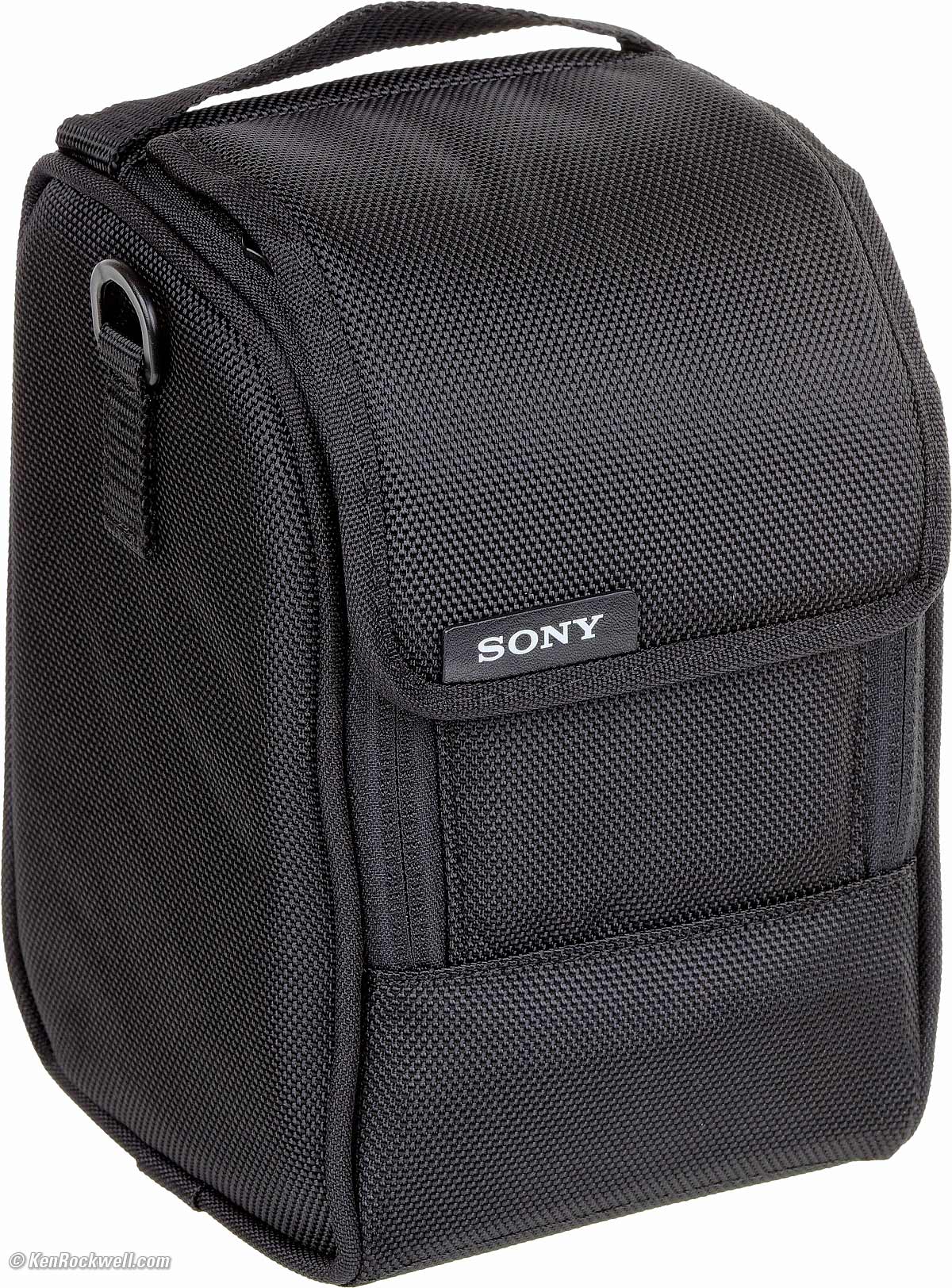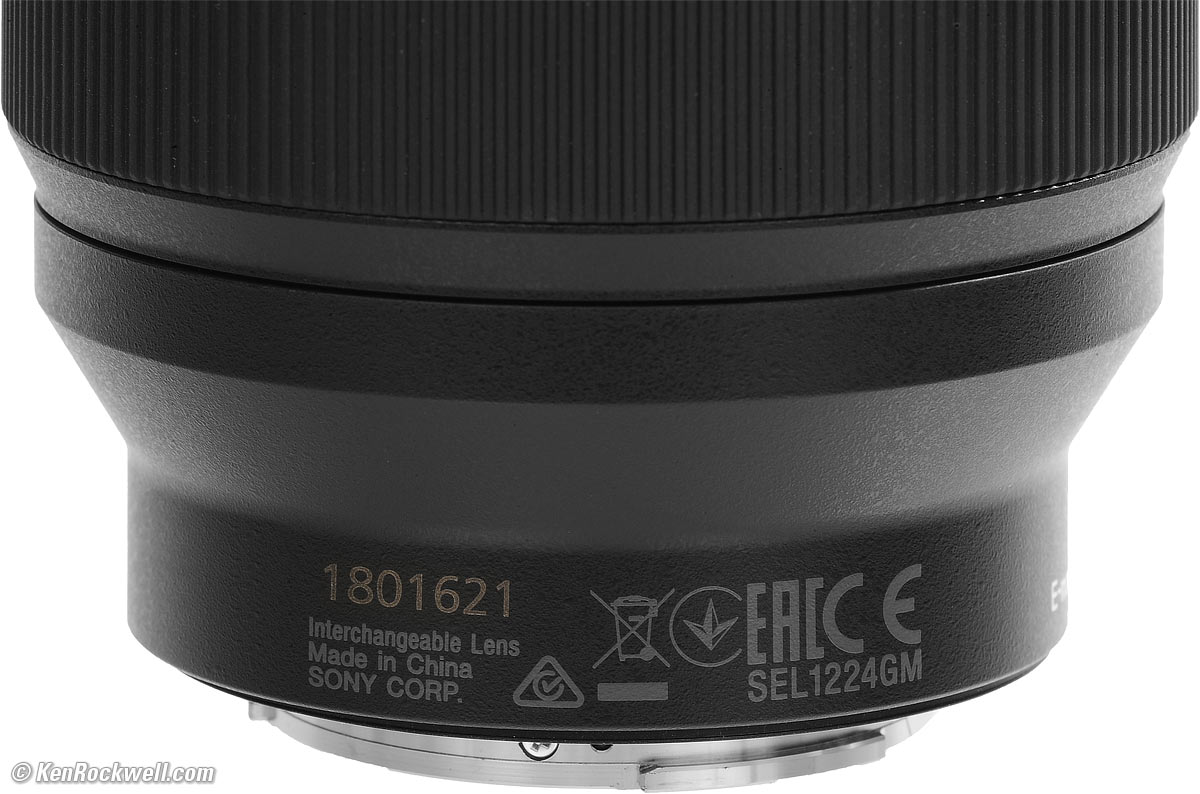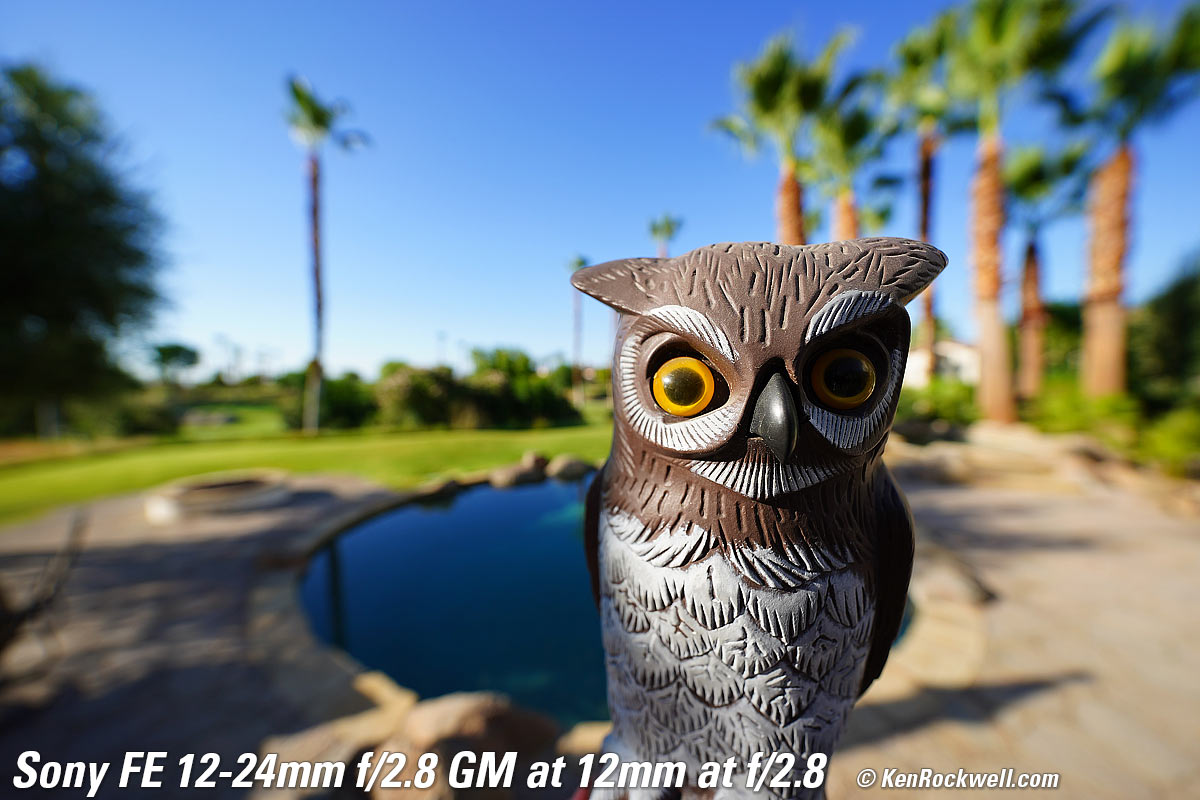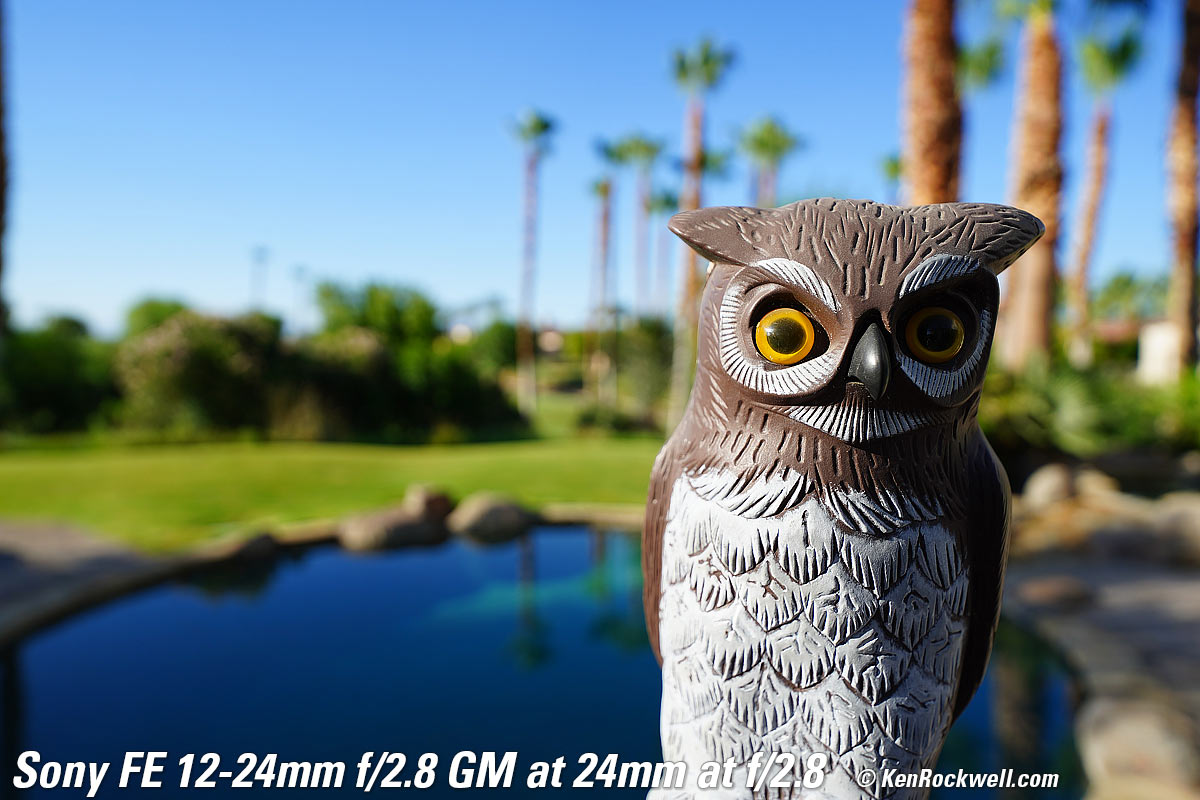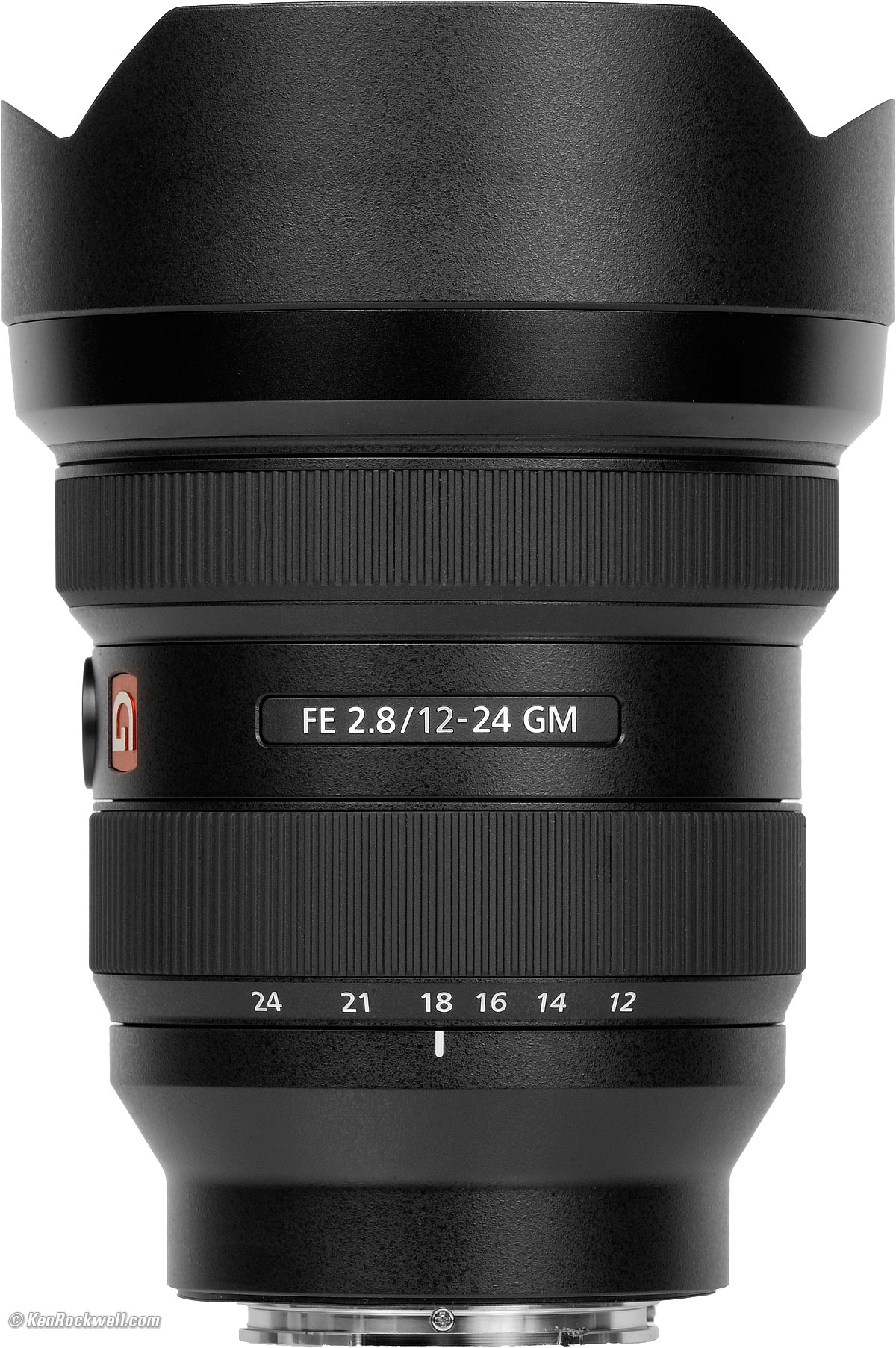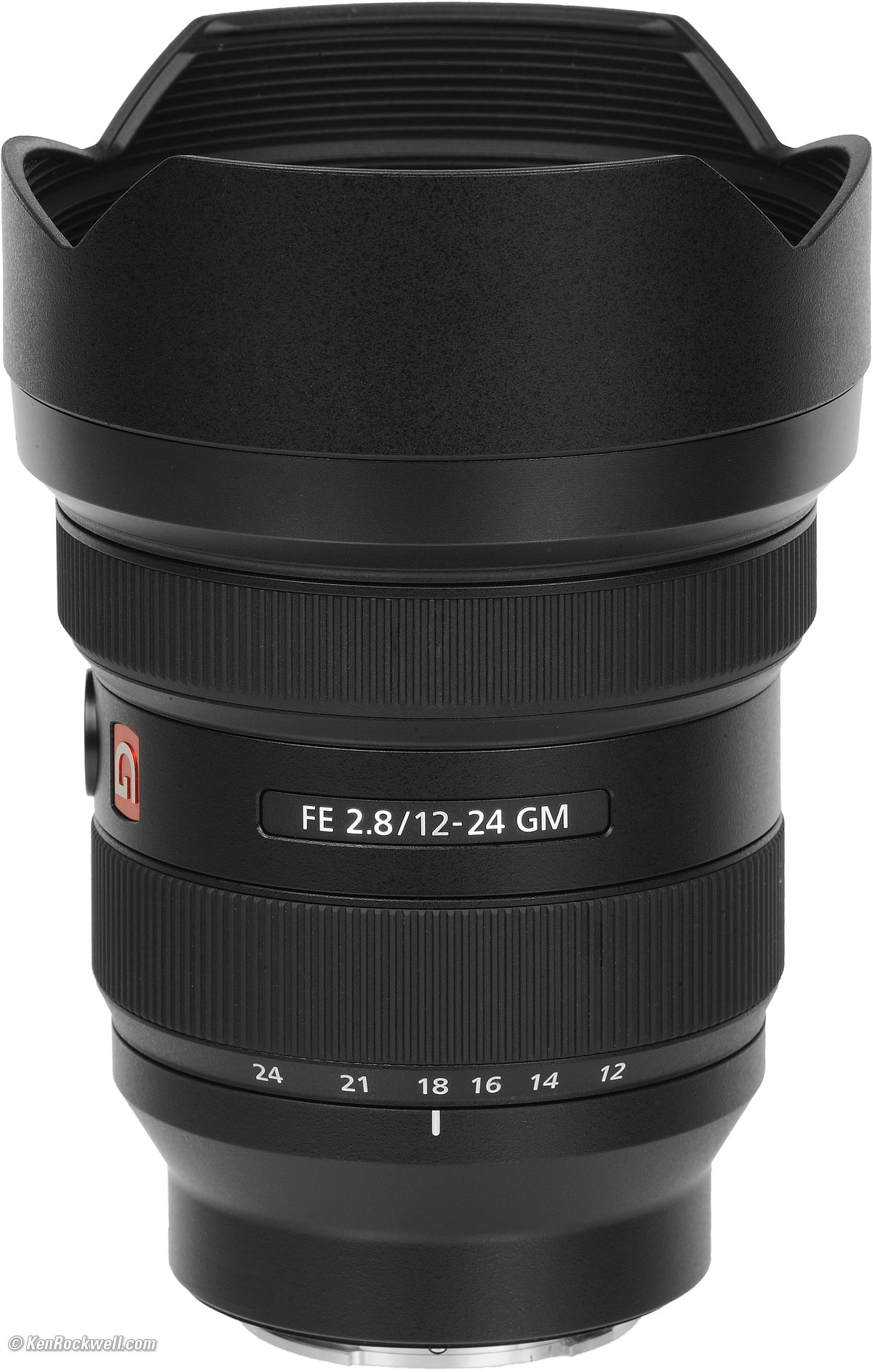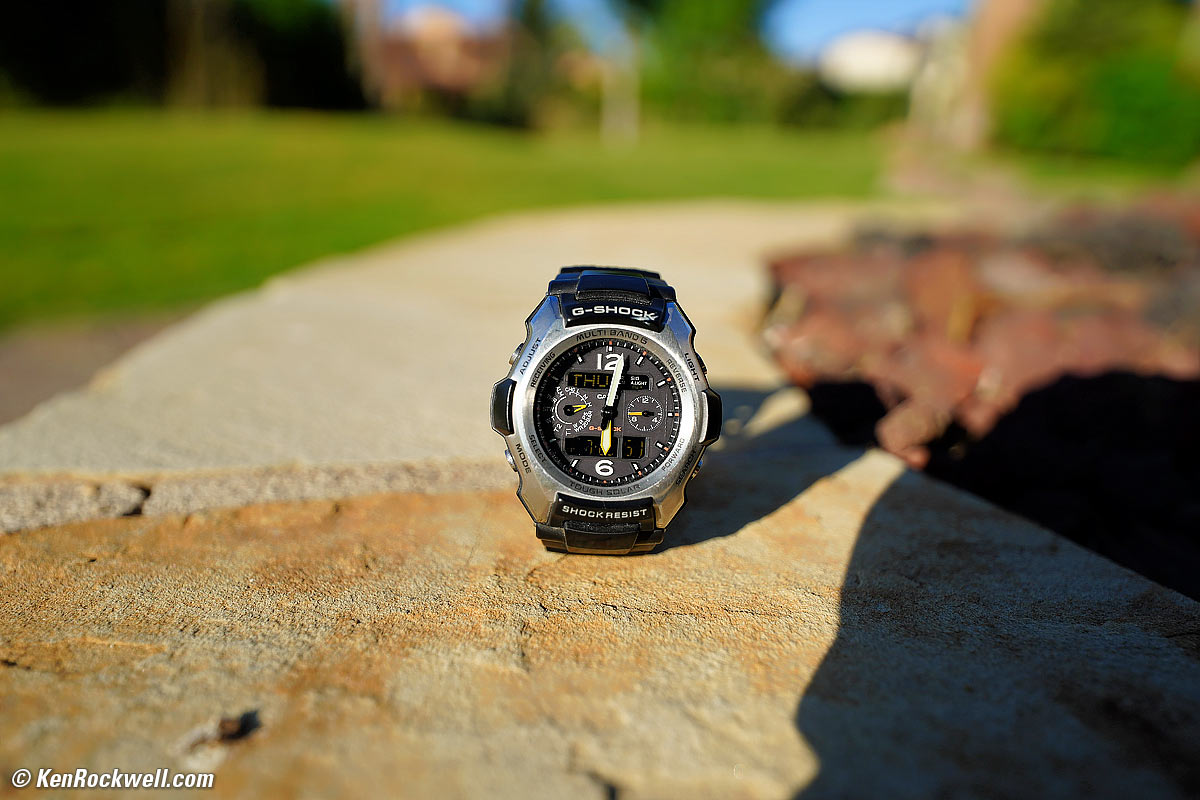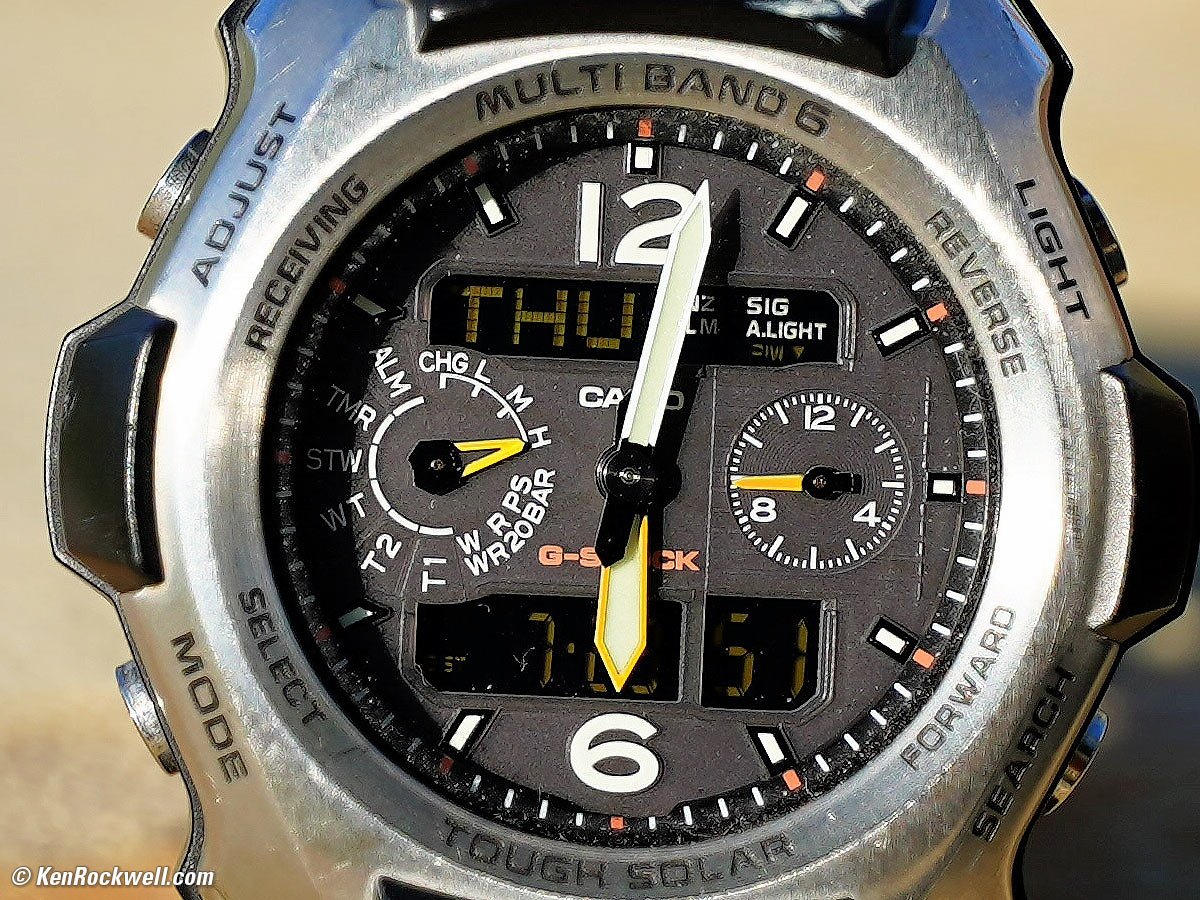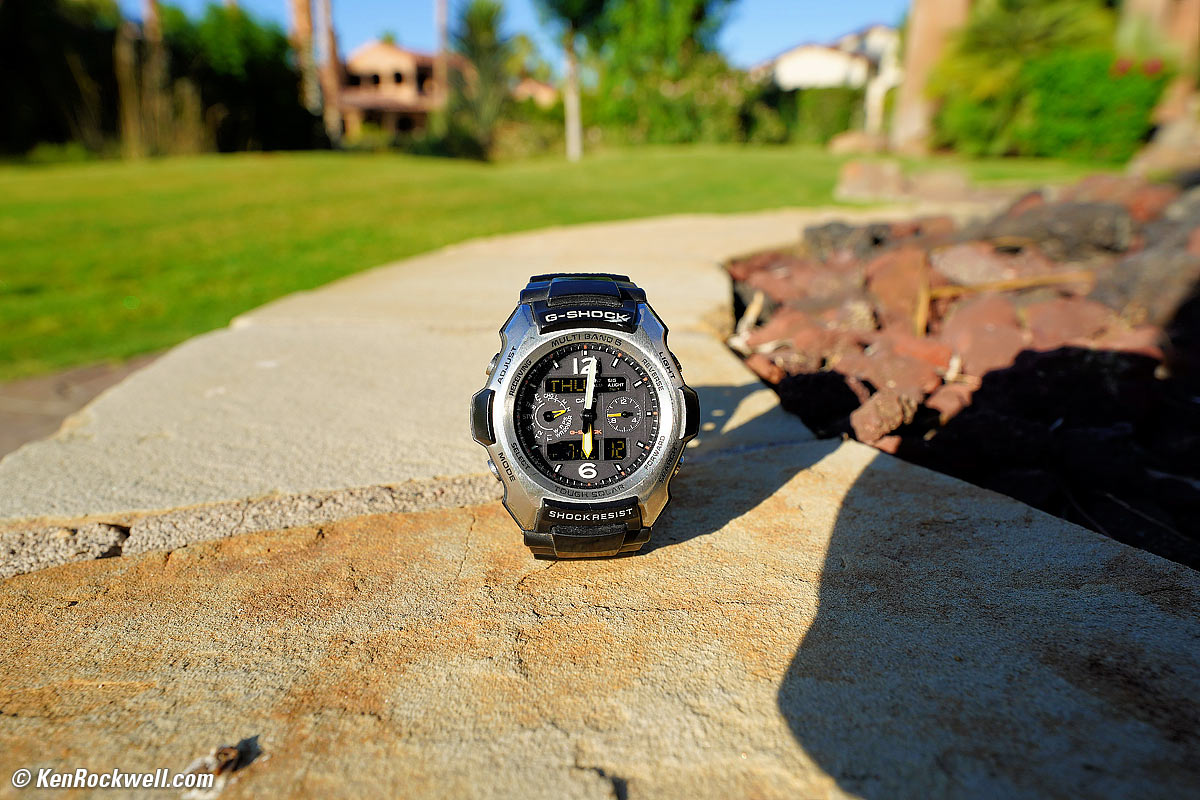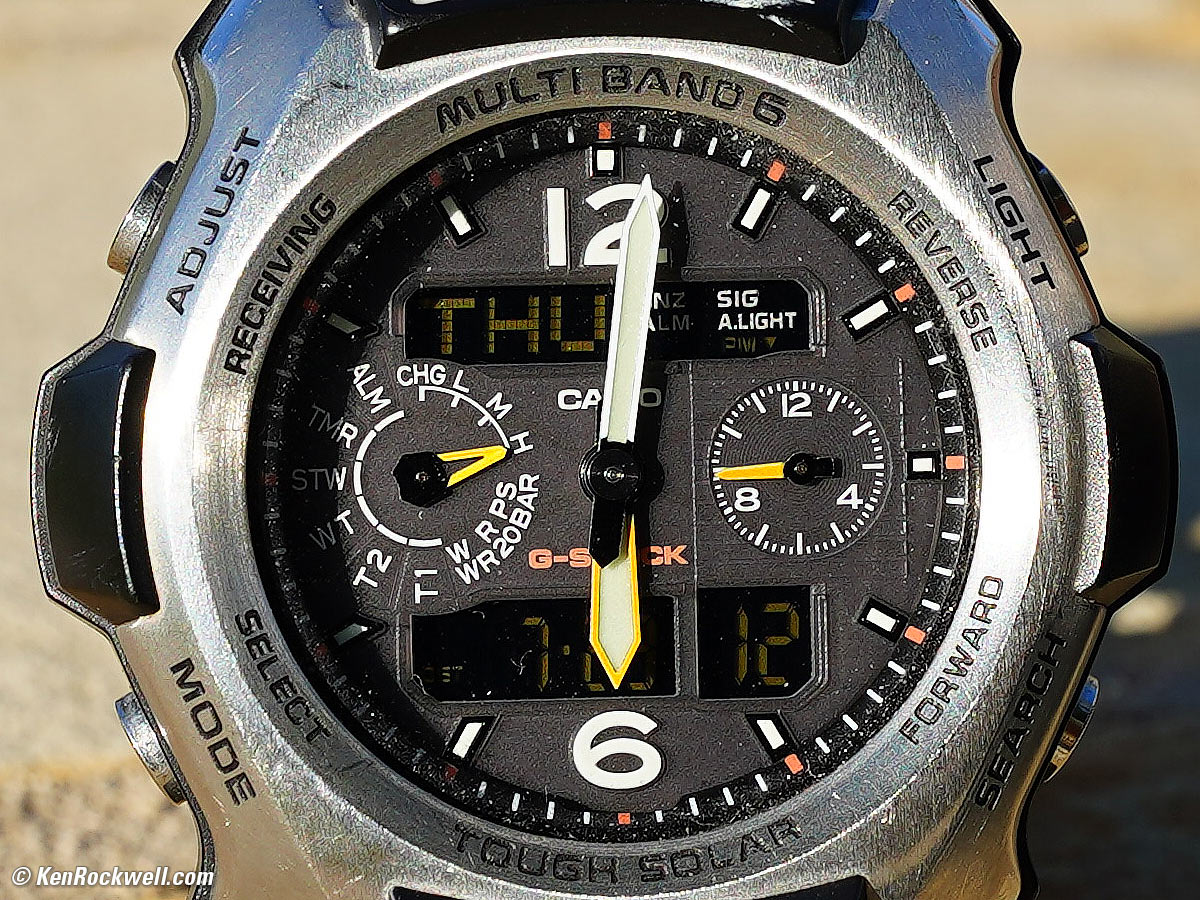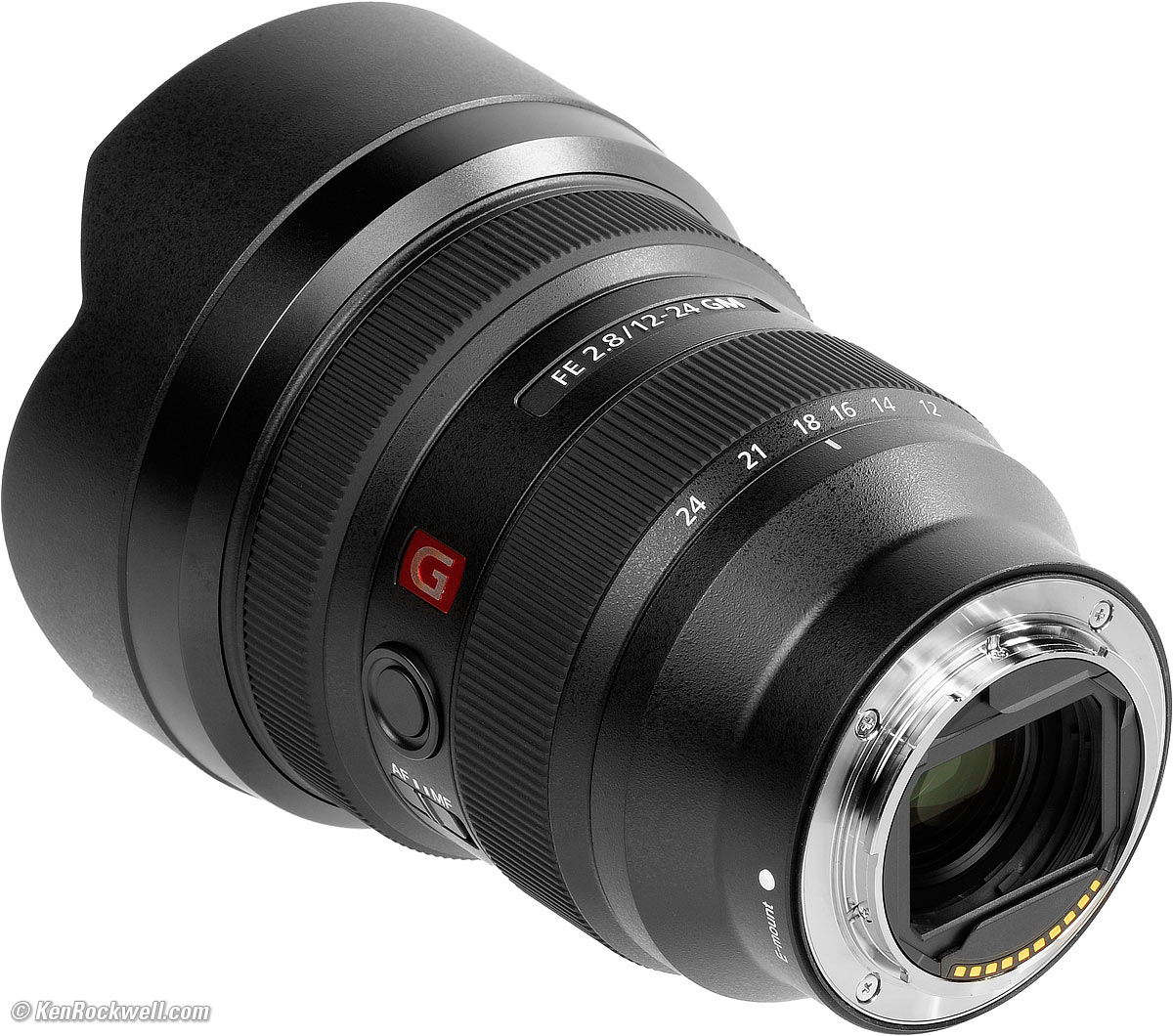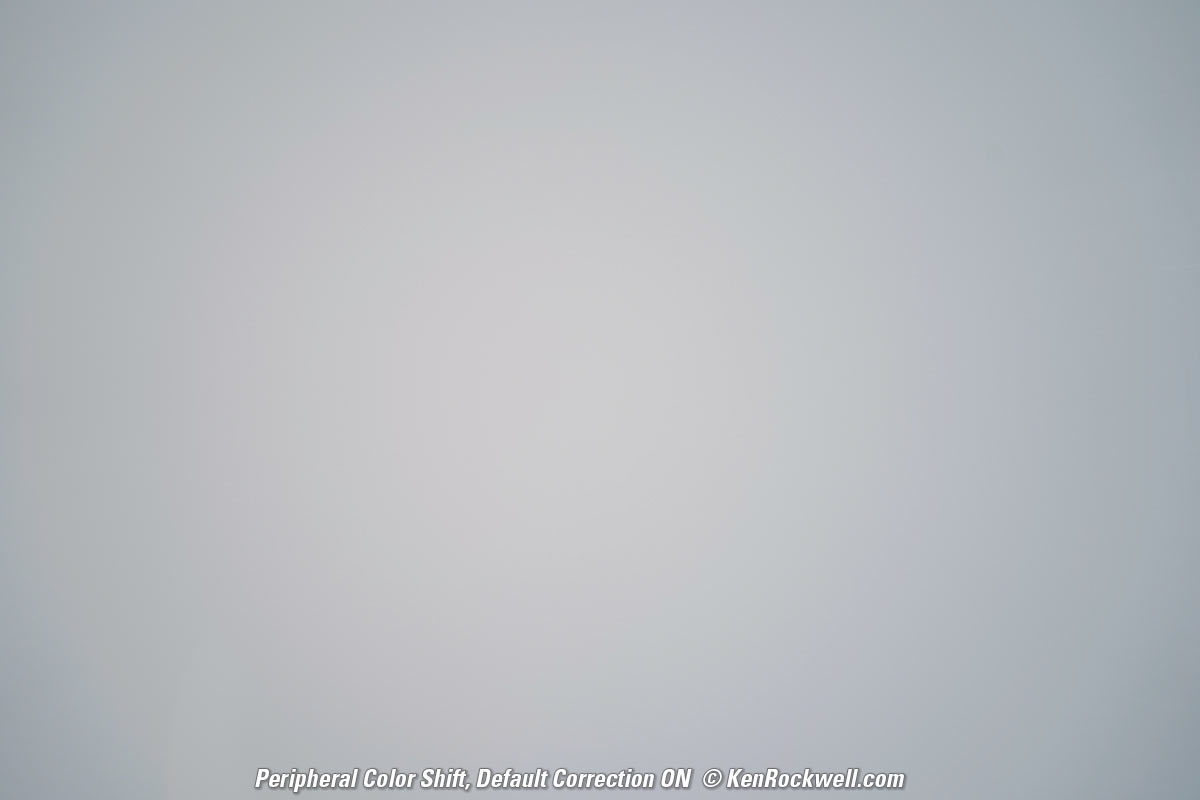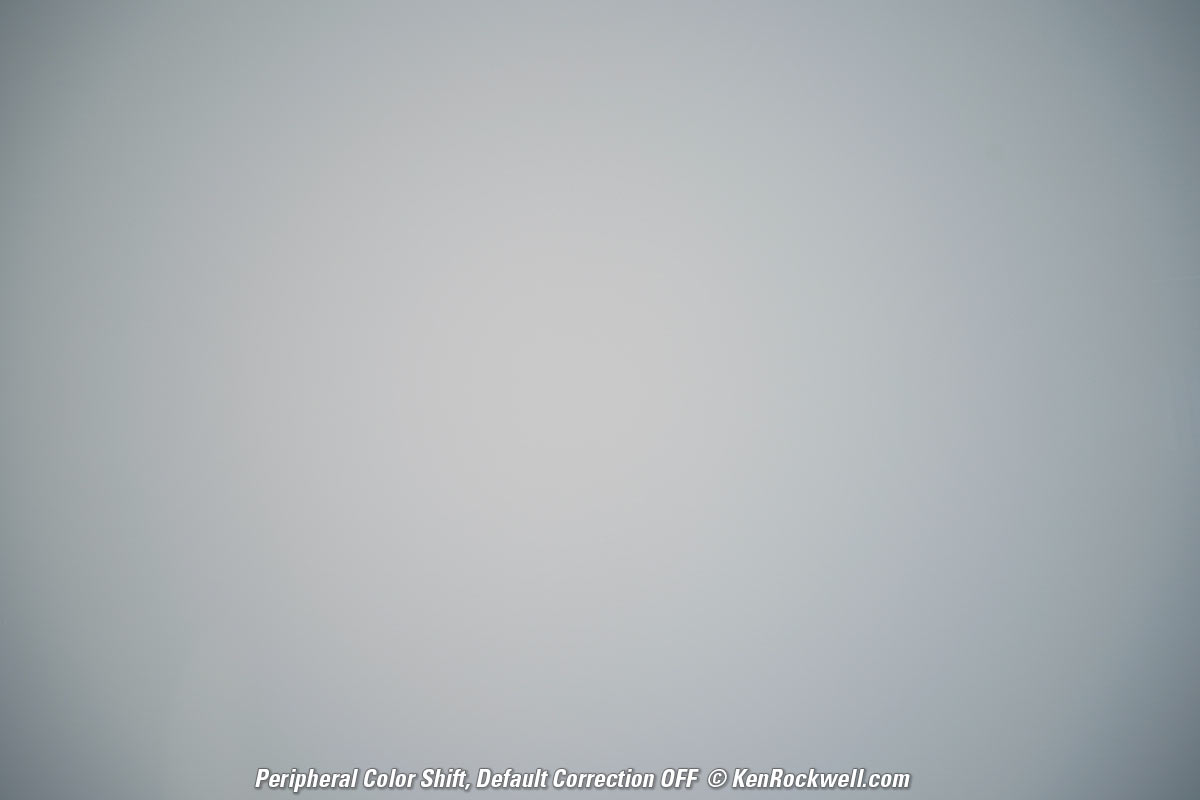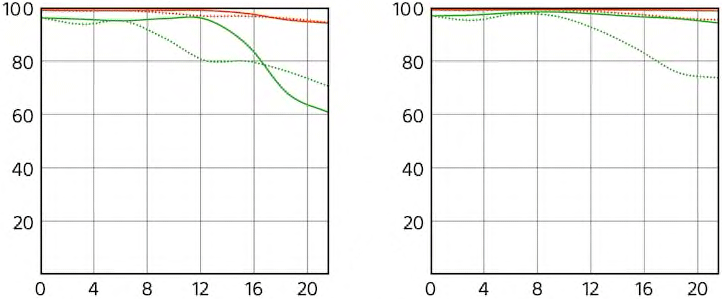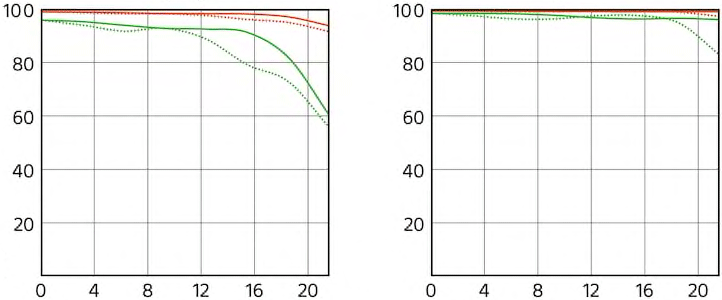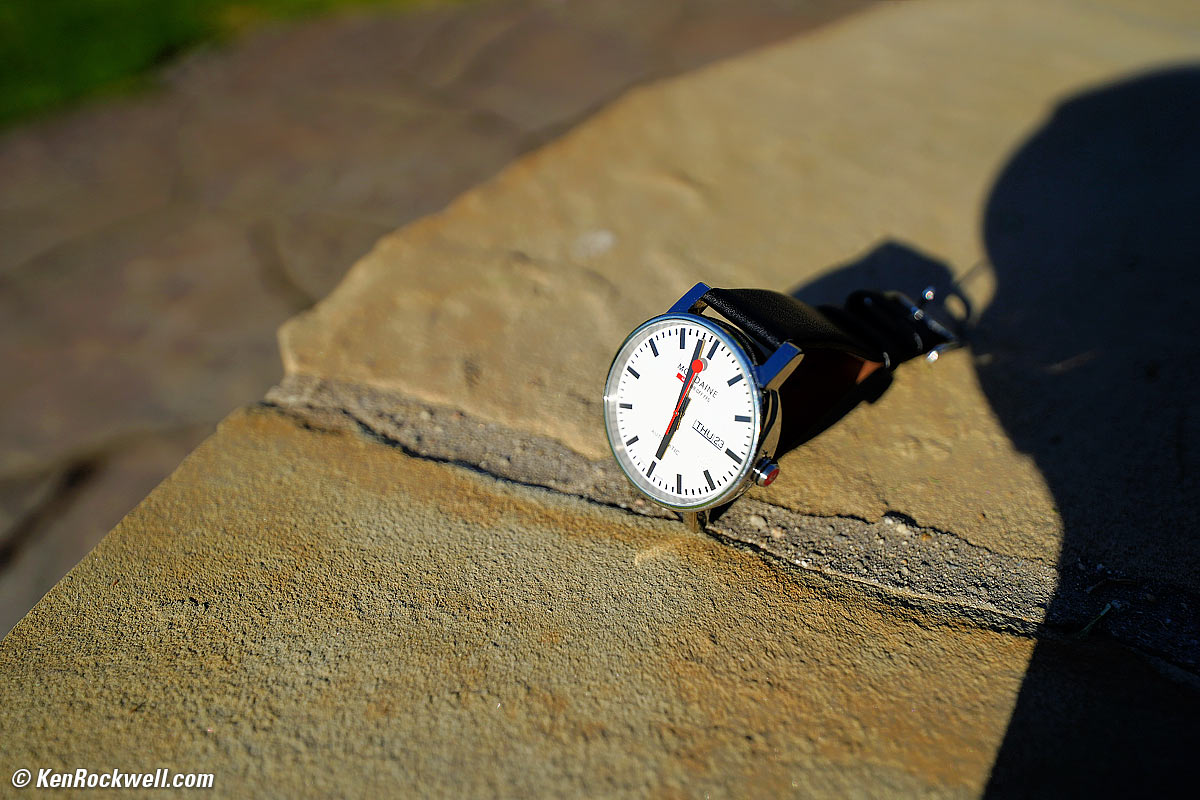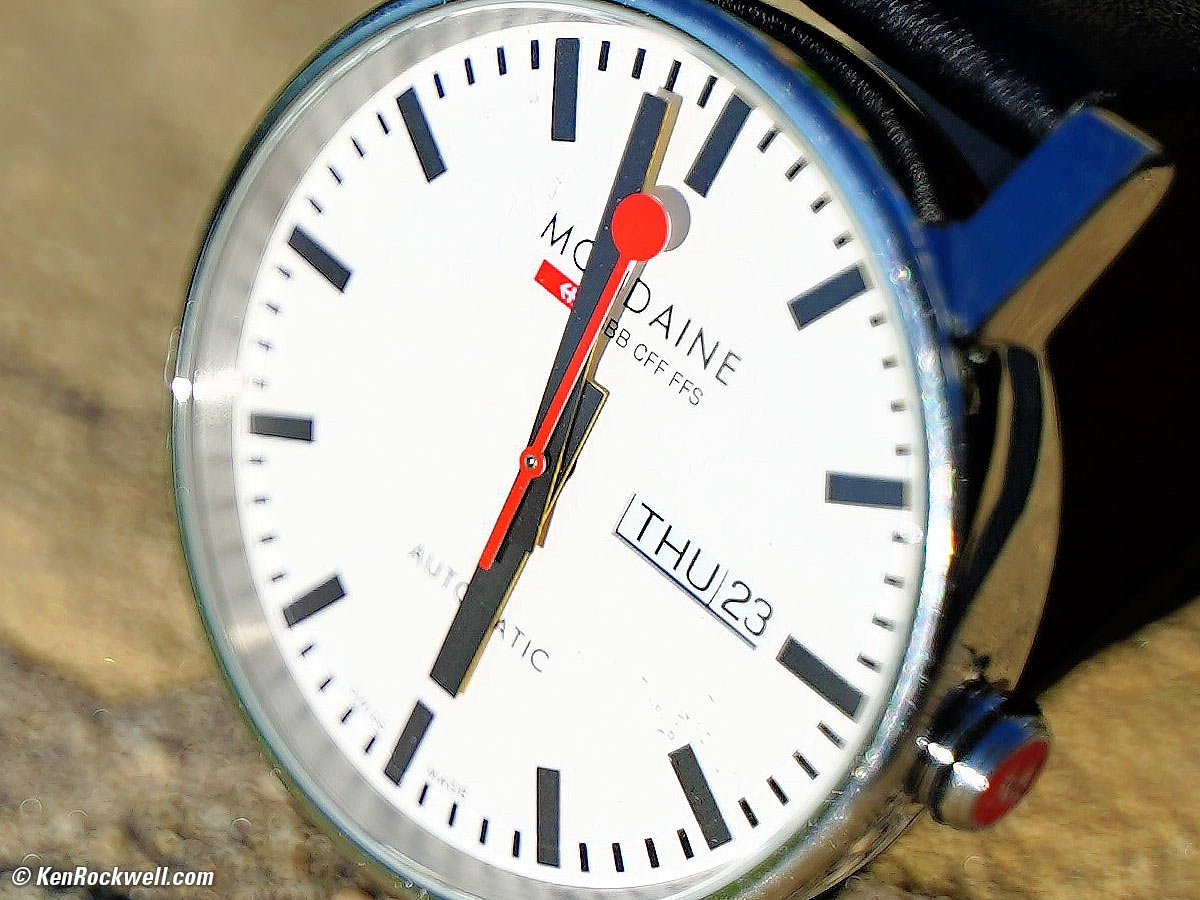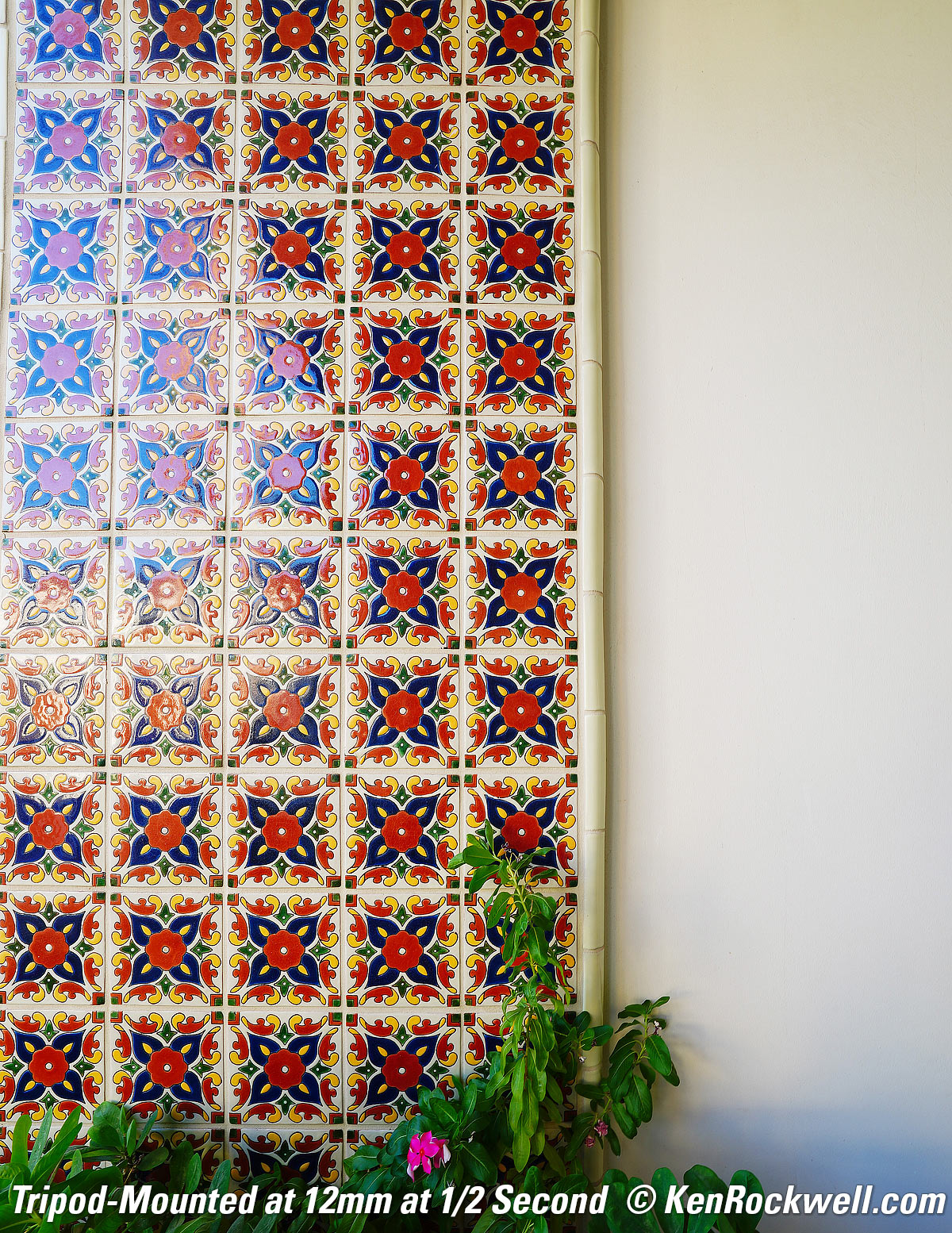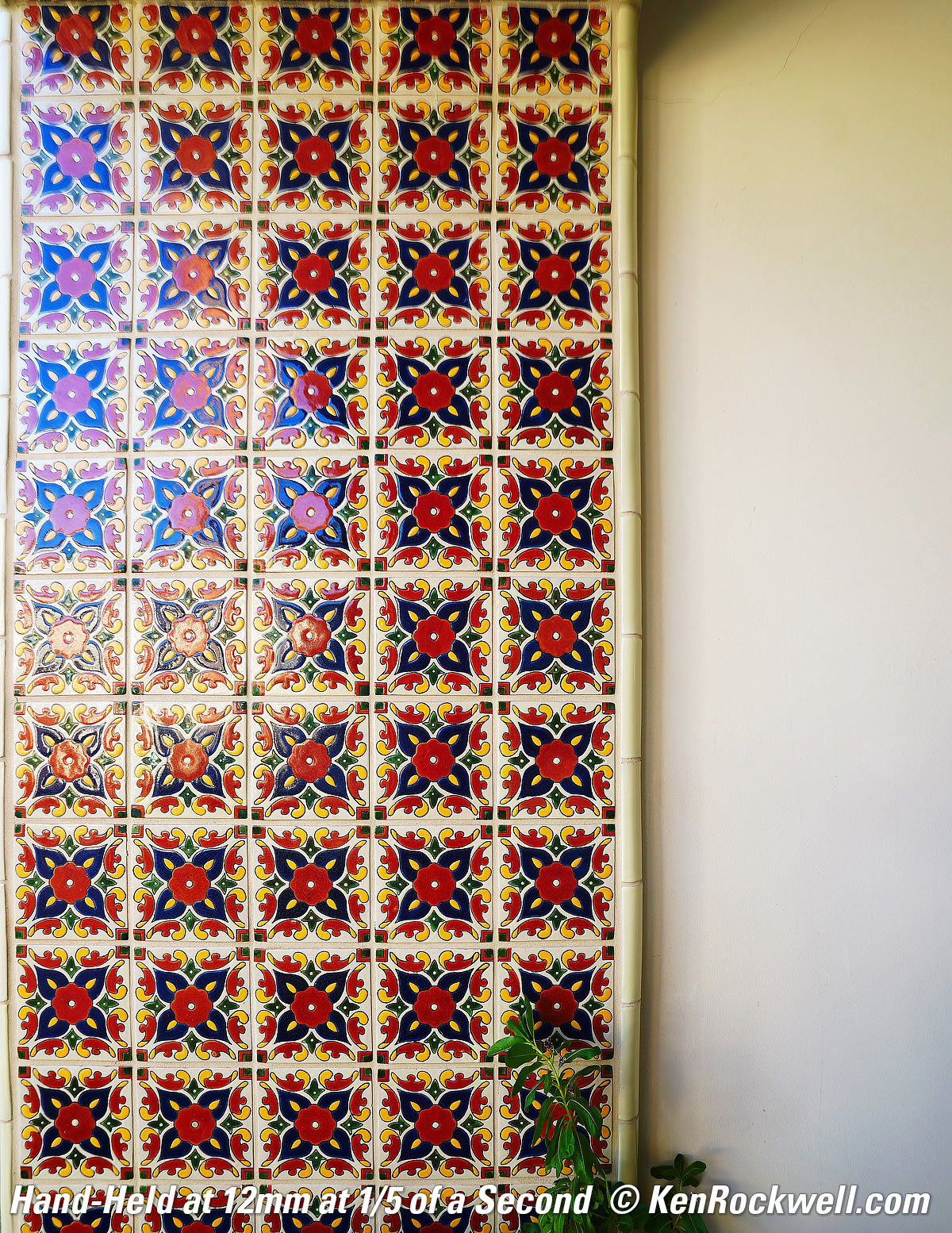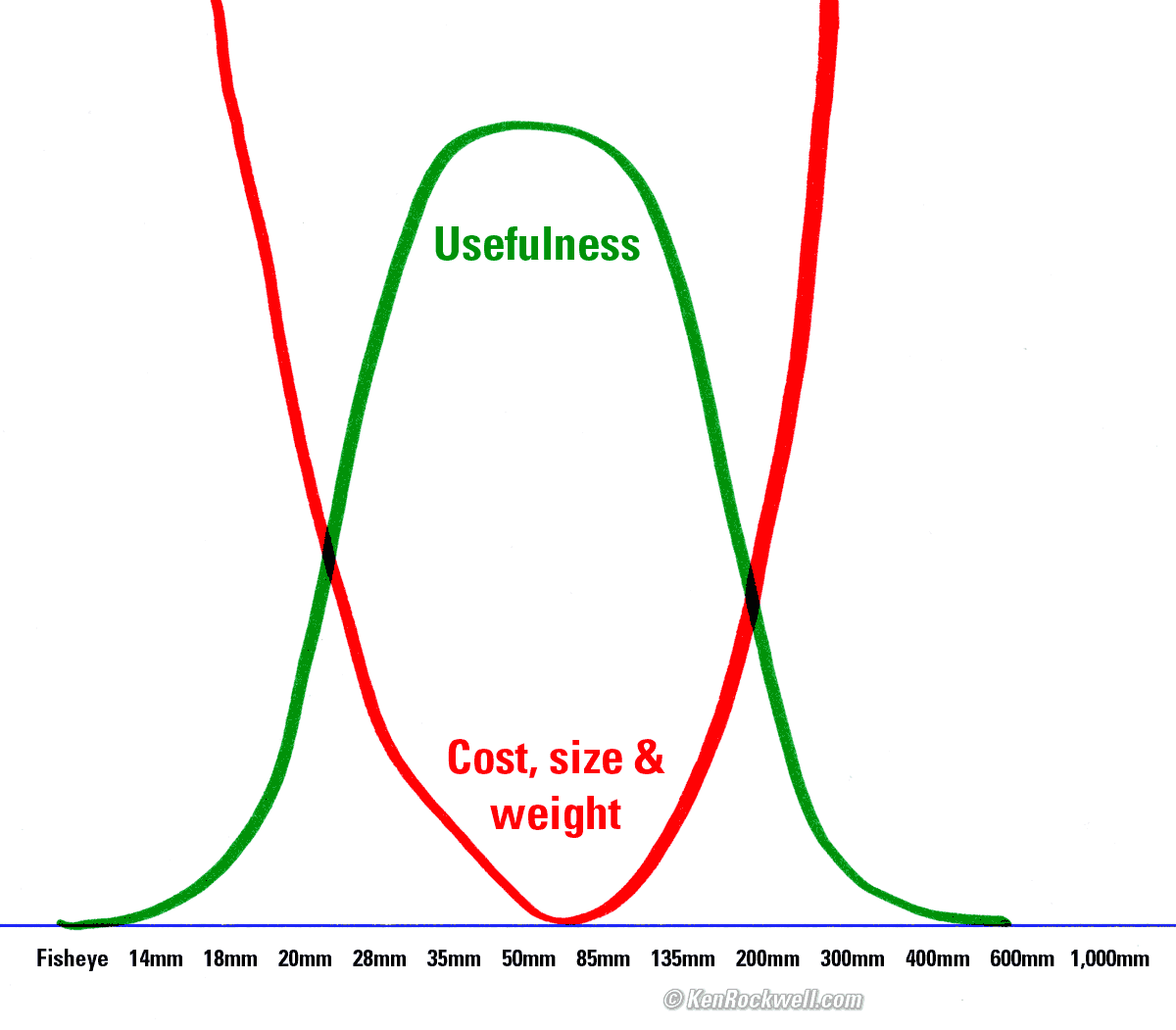Sony 12‑24mm f/2.8 GM
FE Full-Frame 122º Ultra-Ultrawide (2020‑)
Sample Images Intro Compatibility
Specifications Performance Compared
Sony FE 12-24mm f/2.8 GM (rear gel filters, 29.9 oz./847 g, 11"/0.92'/0.28m close focus, $2,898). bigger. I'd get mine at Adorama, at Amazon, at B&H or at Crutchfield, or used at eBay if you know How to Win at eBay.
This all-content, junk-free website's biggest source of support is when you use those or any of these links to approved sources when you get anything, regardless of the country in which you live. Thanks for helping me help you! Ken.
April 2021 Better Pictures Sony Sony Lenses Zeiss Nikon Canon Fuji LEICA All Reviews
Sony 12‑24mm f/4 G (2017-)
How to Use Ultra-Ultrawide Lenses
Sony vs. Nikon vs. Canon Full-Frame
Sample Images top
Sample Images Intro Compatibility
Specifications Performance Compared
These are just snapshots and there are many more throughout the review; my real work is in my Gallery.
Seven Palms Oasis by Starlight, 9:07 PM, 24 July 2020. Sony A9 II, Sony FE 12‑24mm f/2.8 GM at 12mm wide-open at f/2.8 for 30 seconds at ISO 200 (LV -2.9), Tungsten white balance to keep sky blue, Perfectly Clear. bigger, full resolution or camera-original © JPG file.
This is ultrasharp corner-to-corner wide-open at f/2.8, remembering of course that I'm focused at about 5 meters and closer or farther-away things aren't in focus. The fronds are all blurry because they're blowing around in the wind and the stars are moving in this half-minute time exposure, and yes, I got a sunstar even shot here at f/2.8 — bravo Sony!
Spanish Home Interior, 9:02 PM, 17 July 2020. Sony A9 II, Sony FE 12‑24mm f/2.8 GM at 12mm wide-open at f/2.8 at 1/3 second at ISO 100 (LV 4.6), Perfectly Clear. bigger, full resolution or camera-original © JPG file.
Ultra-sharp corner to corner wide-open at f/2.8, and no problems with color-shift in the corners. I'd never actually shoot an interior at f/2.8; I'd shoot it at f/8 or f/11 to get more than just the midfield in focus. I shot this at f/2.8 as a torture-test for you folks who want to see how well this lens performs when it's used at its least sharp aperture.
For those of you with really sharp eyes, you'll notice in the full resolution file that the Sony FE 12‑24mm f/2.8 is so sharp, even wide-open, that there is some aliasing on the HVAC vent grille above and to the right of the fireplace!
Crop from above the the fireplace, right side.
These are shot as Standard JPGs; no FINE JPGs or RAW files were used or needed. The camera-original © JPG files for both these images look dark because I expose deliberately for the highlights and then bring up the shadows in Photoshop CS6 in my Mac Pro with Perfectly Clear. Yes, I always shoot JPG and do all this from the JPG files.
Introduction top
Sample Images Intro Compatibility
Specifications Performance Compared
|
I buy only from these approved sources. I can't vouch for ads below. |
This new Sony FE 12-24mm f/2.8 GM is a state-of-the-art full-frame ultra-ultrawide lens. It's a bigger and faster version of the perfectly wonderful Sony FE 12‑24mm f/4 G.
What makes this lens stand out isn't its faster f/2.8 speed. What really makes it stand out beyond other ultra-ultra wides and the FE 12‑24mm f/4 G are its extraordinarily good sunstars and the best front cap I've ever seen on an ultra-ultra wide lens.
As a guy who's shot fisheyes and ultra-ultrawides since the 1970s I appreciate the importance of a good, strong and easy-to-attach and remove cap for these lenses which cannot be protected by front filters. Shooting them in the real world every day rather than just pulling them from a trunk case once a year means I'm always carrying them with my hand over their front so they don't bang into anything and destroy themselves. It's important to have a fast-working and effective cap to keep the crud off the front of the lens, which is often close to being in focus and will turn up in pictures if the front isn't always clean.
In the old days we had big, beautiful felt-lined metal caps for these exotic lenses that were easy to attach, sealed against everything and didn't fall off, but makers got cheap and replaced them with crappy plastic ones that fell off, didn't seal against dust and had to be carefully oriented each and every time you tried to attach them.
The newly-designed front cap of this 12‑24mm is actually its biggest new feature! It's a plastic device that has four cam-controlled internal tabs that work in unison to grab the lens and stay-on tight regardless of of how it's oriented. Just push it on and it clicks on, and just press the releases to unlock the four internal grabbers to remove. It's felt-lined and is an engineering marvel to those of us who shoot a lot of these lenses.
This new lens also adds a rear gel filter holder to the 12‑24mm f/4 G.
I'd get my 12-24mm f/2.8 at Adorama, at Amazon, at B&H or at Crutchfield, or eventually used at eBay if you know How to Win at eBay.
New since FE 12-24mm f/4 G intro top
 World's first f/2.8 12~24mm lens.
World's first f/2.8 12~24mm lens.
 World's widest f/2.8 zoom.
World's widest f/2.8 zoom.
 Much better sunstars.
Much better sunstars.
 Brilliant new front cap.
Brilliant new front cap.
 Adds a rear gel filter slot.
Adds a rear gel filter slot.
 Bigger, 50% heavier and 70% more expensive than the otherwise very similar FE 12‑24mm f/4 G.
Bigger, 50% heavier and 70% more expensive than the otherwise very similar FE 12‑24mm f/4 G.
 New "Nano AR Coating II" used on the rear of the insanely curved front element. This coating addresses color shift problems in the corners of ultra-ultrawide lenses.
New "Nano AR Coating II" used on the rear of the insanely curved front element. This coating addresses color shift problems in the corners of ultra-ultrawide lenses.
Good intro top
 Superb sunstars, which are important since ultrawides often have the sun in the picture.
Superb sunstars, which are important since ultrawides often have the sun in the picture.
 Flare and ghosts are remarkably well controlled. (examples at Sunstars.)
Flare and ghosts are remarkably well controlled. (examples at Sunstars.)
 Brilliant new front cap.
Brilliant new front cap.
 Stops down to f/22.
Stops down to f/22.
 Peripheral color doesn't shift noticeably. Because older coatings appear to be different colors when seen from different angles, the color transmission of ultra-ultrawide lenses shifted wildly towards blue in the corners. That problem has been reduced by Sony's innovative use of new "Nano AR Coating II" coatings that are less susceptible to angles-of-incidence.
Peripheral color doesn't shift noticeably. Because older coatings appear to be different colors when seen from different angles, the color transmission of ultra-ultrawide lenses shifted wildly towards blue in the corners. That problem has been reduced by Sony's innovative use of new "Nano AR Coating II" coatings that are less susceptible to angles-of-incidence.
 Rubber nub on the bottom keeps the front of the lens from getting worn when your camera is set down on flat surfaces.
Rubber nub on the bottom keeps the front of the lens from getting worn when your camera is set down on flat surfaces.
 Customizable focus-hold button.
Customizable focus-hold button.
 Fluorine front coating repels crud.
Fluorine front coating repels crud.
 Nice case included.
Nice case included.
 Dust and moisture resistant:
Dust and moisture resistant:
Sony 12-24mm f/2.8 weather seals. bigger.
Bad intro top
 Offshored to China; not made domestically in Japan like most lenses from Canon.
Offshored to China; not made domestically in Japan like most lenses from Canon.
 Big.
Big.
 Heavy.
Heavy.
Missing intro top
 No Image Stabilization. While in-camera stabilization works well in the center, it can't work well in the corners with ultra-ultrawide lenses.
No Image Stabilization. While in-camera stabilization works well in the center, it can't work well in the corners with ultra-ultrawide lenses.
 Front fluorine coating to repel crud (excellent), but no rear-element fluorine coating.
Front fluorine coating to repel crud (excellent), but no rear-element fluorine coating.
 No ability to use front filters — no front element protection other than the little front petals.
No ability to use front filters — no front element protection other than the little front petals.
Compatibility top
Sample Images Intro Compatibility
Specifications Performance Compared
I'd get my 12-24mm f/2.8 at Adorama, at Amazon, at B&H or at Crutchfield, or eventually used at eBay if you know How to Win at eBay.
This works on all Sony E-mount cameras, full-frame and crop-sensor. This includes all the variations of NEX, A9-, A7-, A6xxx and A5xxx series cameras.
It will not work on any Sony A-mount DSLR or any Minolta MAXXUM 35mm SLR of any kind. Those use the old A mount which was actually the Minolta MAXXUM mount from 1986.
Specifications top
Sample Images Intro Compatibility
Specifications Performance Compared
I'd get my 12-24mm f/2.8 at Adorama, at Amazon, at B&H or at Crutchfield, or eventually used at eBay if you know How to Win at eBay.
Name specifications top
Sony calls this the FE 12–24 mm F2.8 GM:
FE: Full-frame coverage, E-mount.
GM: "G Master," which means Sony's best.
Sony's model number: SEL1224GM.
Optics specifications top
Sony FE 12-24mm f/2.8 GM internal optical construction. Extreme Aspherical ("XA"), Aspherical, Super ED and ED elements. bigger.
17 elements in 14 groups.
Three Extreme Aspherical ("XA") elements. These are so precisely curved that they eliminate the "onion ring" effect seen in blur circles (bokeh) in other aspherical lenses.
One Aspherical element.
Two Super ED elements.
Three ED elements.
Fluorine front (only) coating to resist dirt and smudges.
New Nano AR Coating II used on the rear of the insanely curved front element. This coating addresses the color shift problems all coatings have when addressed at different angles. What makes it interesting is that it's applied with the same thickness in all places; in older times manufacturers had to vary coating thicknesses away from the center to keep the color transmission (rendition) the same in the corners.
It's an in-barrel pumper zoom: the front and rear groups both move in and out inside the barrel as zoomed.
Autofocus specifications top
Two internal focus groups move with four original high-speed, high-thrust XD (extreme dynamic) Linear Motors. bigger.
No external movement as focussed, so no air or dust is sucked in.
Filters specifications top
Rear gels, only.
Sony 12-24mm f/2.8 rear gel filter holder.
Diaphragm specifications top
Sony 12-24mm f/2.8 electronic diaphragm assembly. bigger.
9 rounded blades.
Electronically actuated.
Stops down to f/22.
Sony 12-24mm f/2.8 GM. bigger.
Focal Length specifications top
12-24mm.
When used on an APS-C camera, it sees the same angles of view as an 18-36mm lens sees when used on a full-frame or 35mm camera.
See also Crop Factor.
Angles of View specifications top
Full Frame
122º ~ 84º diagonal.
113º ~ 74º horizontal.
90º ~ 53º vertical.
APS-C
99º ~ 61º diagonal.
Focus Scale specifications top
No.
Infinity Focus Stop specifications top
No.
Depth of Field Scale specifications top
No.
Infrared Focus Index specifications top
No.
Close Focus specifications top
11 Inches.
0.92 feet.
0.28 meters.
Maximum Reproduction Ratio specifications top
1:7 (0.14 ×).
Reproduction Ratio Scale specifications top
No.
Image Stabilizer specifications top
NONE.
Front Cap specifications top
Plastic front cap for Sony 12-24/2.8. bigger.
Inside the 12-24/2.8 front cap. bigger.
Four internal grabbers move together when the front outer tabs are pressed. This is a brilliant design: it snaps on the lens just by pushing it home without needing to align it, it stays snug, keeps out dust and doesn't come off until you press the tabs. Bravo Sony!
Hood specifications top
None; the front of the lens has "petals" to protect the huge fish-bowl element from knocking into things, but does little to keep stray light from hitting the glass:
Sony 12-24mm f/2.8 GM. bigger.
Case specifications top
Padded case. bigger.
Soft case included.
It's nice padded nylon, with both zippered and velcroed closures.
Same case as 16-35/2.8 GM, 24-70/2.8 GM and maybe others.
Size specifications top
3.84" ø maximum diameter × 5.39" extension from flange.
97.6 mm ø maximum diameter × 137 mm extension from flange.
Weight specifications top
29.9 oz. (847 g or 1.87 pounds).
Announced specifications top
10 AM EDT 07 July 2020, Tuesday.
Promised for specifications top
13 August 2020.
Included specifications top
Lens.
Filter-cutting template.
ALC-R1EM rear cap.
Soft case.
Sony's Model Number specifications top
SEL1224GM.
Quality specifications top
Sony 12-24mm f/2.8 GM. bigger.
Made in China.
Price, U. S. A. specifications top
July 2020
April 2021
$2,898 at Adorama, at Amazon, at B&H and at Crutchfield.
About $2,600 used if you know How to Win at eBay.
Performance top
Sample Images Intro Compatibility
Specifications Performance Compared
Overall Autofocus Manual Focus Breathing Bokeh
Distortion Ergonomics Falloff Filters, use with
Flare & Ghosts Lateral Color Fringes
Lens Corrections Macro Mechanics
Peripheral Color Shifts Sharpness
Spherochromatism Stabilization Sunstars
I'd get my 12-24mm f/2.8 at Adorama, at Amazon, at B&H or at Crutchfield, or eventually used at eBay if you know How to Win at eBay.
Overall performance top
The 12-24/2.8 GM is a monster of a lens, and performs extremely well.
Autofocus performance top
Autofocus is fast, but not instantaneous It's certainly more than fast enough for an ultra-ultrawide; they don't have to focus very hard.
Manual Focus performance top
Manual focusing is entirely electronic; the manual focus ring isn't connected to anything other than a digital encoder.
Focus Breathing performance top
Focus breathing is the image changing size as focused in and out. It's important to cinematographers that the image not breathe because it looks funny if the image changes size as focus gets pulled back and forth between actors. If the lens does this, the image "breathes" by growing and contracting slightly as the dialog goes back and forth.
The image from this 12-24 gets smaller as focussed more closely. The effect is strongest at 12mm.
Bokeh performance top
Bokeh, the feel, character or quality of out-of-focus areas as opposed to how far out of focus they are, doesn't matter much for ultra-ultrawides because everything is almost always pretty much in focus anyway. If you go way out of your way to snap a headshot with this lens, you're clearly looking for a weird effect.
This said, bokeh is good to neutral. Sony's doing their homework; it looks great if you care.
Here are photos from headshot distance wide-open:
Scarecrow Owl, 23 July 2020. Sony A9 II, Sony FE 12-24mm f/2.8 GM at 12mm at f/2.8 at 1/1,000 at Auto ISO 100 (LV 12.9). bigger or camera-original © file.
Scarecrow Owl, 23 July 2020. Sony A9 II, Sony FE 12-24mm f/2.8 GM at 24mm at f/2.8 at 1/1,250 at Auto ISO 100 (LV 13¼). bigger or camera-original © file.
As always, if you want to throw the background as far out of focus as possible, shoot at 24mm at f/2.8 and get as close as you can.
Distortion performance top
The Sony FE 12-24mm f/2.8 GM has no visible distortion, shot as JPG with default distortion correction ON.
Even if you turn off the correction, the distortion is very well controlled, especially in light of this lens' insane focal-length range. Without correction there is a tiny, almost invisible amount of barrel distortion at 12mm, none visible at 14mm, and moderate pincushion distortion from 16mm to 24mm.
For more critical scientific use, use these corrections in Photoshop's lens correction filter to JPG images. No, I have no idea why my A9 II doesn't correct the distortion completely.
If you shoot raw and use non-manufacturer software to process the raw data into images, that software is unlikely to be able to correct the distortion as is done in-camera as JPGs.
These aren't facts or specifications, they are the results of my research that requires hours of photography and calculations on the resulting data.
On Full-Frame and 35mm at 10' (3m) |
Correction factor to use with images made with correction ON in A9 II |
Correction factor with uncorrected images |
12mm |
-0.30 | +1.20* |
14mm |
-0.50 | -0.50* |
16mm |
-0.50 | -1.50* |
18mm |
-1.00 | -2.00 |
21mm |
-0.70 | -2.70 |
24mm |
-0.50 | -3.00 |
© 2020 KenRockwell.com. All rights reserved.
* Some waviness remains after this correction.
Ergonomics performance top
Sony 12-24/2.8. bigger. |
Sony 12-24/2.8. bigger. |
Other than being huge and having no ability to use front filters to protect the glass of your $3,000 lens, everything is mostly where you want it, except that Sony put their ( G ) vanity logo where the AF/MF slide switch is supposed to be, so you have to do gymnastics to reach down a couple of inches to reach it. Poo.
Zoom is the usual direct-coupled mechanical ring, while focus is entirely electronic.
There is a programmable control button.
As I covered at the Introduction, the front cap is the best in the industry — by far.
A rubber nub on the bottom keeps the front of the lens from getting worn when your camera is set down on flat surfaces.
The lens-mounting index is a tiny little white ball which is just about invisible and hard to feel. Poo!
Falloff performance top
Falloff isn't an issue, so long as you leave the automatic corrections active.
I've greatly exaggerated the falloff by shooting a gray field and placing these on a gray background; it will not look this bad in actual photos of real things:
Sony 12-24mm f/2.8 Falloff on Full-Frame at infinity, correction left ON.
© 2020 KenRockwell.com. All rights reserved. |
Of course if you go out of your way to turn off falloff correction, you'll see plenty at 12mm and at f/2.8:
Sony 12-24mm f/2.8 Falloff on Full-Frame at infinity, correction deliberately turned OFF.
© 2020 KenRockwell.com. All rights reserved. |
Filters, use with performance top
It won't take any front filters, either for protection or anything else.
Instead, as we've done since at least the 1970s with ultra-ultrawides, you cut gel filters to fit the little rear holder:
Sony 12-24mm f/2.8 rear gel filter holder.
More at Filter Usage.
Flare & Ghosts performance top
Flare and ghosts are remarkably well controlled.
See examples at Sunstars.
Lateral Color Fringes performance top
There are no color fringes when shot as JPG with the default Chromatic Aberration Correction left ON.
if you go out of your way to turn this OFF (or shoot raw and then use non-manufacturer software to process that data into images) then there is just the tiniest bit of red/blue fringing at 12mm, and none at 18mm and 24mm.
This is extraordinary performance, especially for a lens like this. Back in the 1970s, Nikon's world-changing 13mm f/5.6 (the world's widest professional lens for about 30 years) had so much lateral color that most Nikon digital cameras still can't correct for it!
Lens Corrections performance top
My Sony A9 II corrects for any or all of Falloff ("Shading"), Lateral Color ("Chromatic Aberratio…") and Distortion.
By default, Falloff ("Shading"), Lateral Color ("Chromatic Aberratio…") corrections are ON and Distortion correction is OFF.
At least on my A9 II, I can turn any of these ON or OFF individually.
Macro Performance performance top
Macro doesn't seem to get very close, which is as expected for an ultra-ultrawide. It gets as close as you'd want before you get in your own light, just that it's so wide you don't seem to be very close. Se the shadow on the right? That's cast by this lens!
At f/2.8
It's plenty sharp at f/2.8:
Casio G-Shock Solar Atomic Watch at close-focus distance, 23 July 2020. bigger or camera-original © file.
1,200 × 900 pixel crop from above. bigger or camera-original © file.
If this 1,200 × 900 pixel crop is about 3" (7.5cm) wide on your screen, then the complete image printed at this same large magnification would be about 10 × 15" (25 × 38cm).
If this 1,200 × 900 pixel crop is about 6" (15cm) wide on your screen, then the complete image printed at this same extreme magnification would be about 20 × 30" (50 × 75cm).
If this 1,200 × 900 pixel crop is about 12" (30cm) wide on your screen, then the complete image printed at this same insanely high magnification would be about 40 × 60" (1 × 1.5 meters).
At f/8
It's even sharper at f/8:
Casio G-Shock Solar Atomic Watch at close-focus distance, 23 July 2020. bigger or camera-original © file.
1,200 × 900 pixel crop from above. bigger or camera-original © file.
If this 1,200 × 900 pixel crop is about 3" (7.5cm) wide on your screen, then the complete image printed at this same large magnification would be about 10 × 15" (25 × 38cm).
If this 1,200 × 900 pixel crop is about 6" (15cm) wide on your screen, then the complete image printed at this same extreme magnification would be about 20 × 30" (50 × 75cm).
If this 1,200 × 900 pixel crop is about 12" (30cm) wide on your screen, then the complete image printed at this same insanely high magnification would be about 40 × 60" (1 × 1.5 meters).
Mechanical Quality performance top
Sony 12-24mm f/2.8 GM. bigger.
This is a half plastic and half metal lens. Most of the internals are metal while most of the outside is plastic. Other than the political, economic and humanitarian shames of having been offshored to China, it's well made.
The barrel itself never moves or changes as zoomed, but you will see the front (or rear) elements moving inside the barrel as zoomed. This is a much tougher way to make a lens than to have the whole front barrel pump in and out: if you hit the front of the lens you don't have as much risk of damaging the internal zoom mechanisms.
Front Bumper
None.
Front Protective Petals
Plastic.
Filter Threads
NONE (rear gel slot only).
Hood Bayonet Mount
NONE.
Front Barrel (between petals and focus ring)
Metal.
Focus Ring
Rubber-covered plastic.
Mid Barrel
Section with AF/MF switch and focus lock button: plastic.
AF/MF Slide Switch
Plastic.
Zoom Ring
Rubber-covered metal.
Rear Barrel
Plastic.
Identity
Metal-like debossed plate between focus and zoom rings.
Printed on bottom of barrel near mount.
Internals
Seem like mostly metal!
Dust Gasket at Mount
Yes.
Mount
Dull chromed metal.
Markings
Some engraved, some just painted.
Serial Number
Sony 12-24mm f/2.8 GM. bigger.
Laser engraved nicely in black-on-black on bottom of barrel.
Date Code
None found.
Noises When Shaken
Loads of clunking from the unfettered focussing groups flopping all around inside the lens. They don't cage or lock-down when the power is off.
Made in
Made in China.
Peripheral Color Shifts performance top
Ultra-ultrawide lenses shift color in the corners because anti-reflection coatings work differently at different colors at different angles. As you know, anti-reflection coatings work by taking advantage of interferences at various wavelengths, and the effective wavelengths change as the effective coating thicknesses change as seen from different angles.
This isn't an issue with ordinary lenses, but with lenses like this where the sides of the pictures are looking more hard right or left than in front of you, it matters.
Luckily I've never seen this in normal photos with this lens, even if I can exaggerate it by shooting blank plates below. Oddly Sony's default falloff correction doesn't correct completely for peripheral color:
Sony 12-24mm f/2.8 Peripheral Color Shift at 12mm at f/5.6. bigger.
It's more obvious if you deliberately turn off the correction:
Sony 12-24mm f/2.8 Peripheral Color Shift at 12mm at f/5.6. bigger.
Sharpness performance top
Lens sharpness has nothing to do with picture sharpness; every lens made in the past 100 years is more than sharp enough to make super-sharp pictures if you know what you're doing. The only limitation to picture sharpness is your skill as a photographer. It's the least talented who spend the most time worrying about lens sharpness and blame crummy pictures on their equipment rather than themselves. Skilled photographers make great images with whatever camera is in their hands; I've made some of my best images of all time with an irreparably broken camera! Most pixels are thrown away before you see them, but camera makers don't want you to know that.
If you're not getting ultra-sharp pictures with this, be sure not to shoot at f/11 or smaller where all lenses are softer due to diffraction, always shoot at ISO 100 or below because cameras become softer at ISO 200 and above, avoid shooting across long distances over land which can lead to atmospheric heat shimmer, be sure everything is in perfect focus, set your camera's sharpening as you want it (I set mine to the maximum) and be sure nothing is moving, either camera or subject. If you want to ensure a soft image with any lens, shoot at f/16 at ISO 1,600 at default sharpening in daylight of subjects at differing distances in the same image.
Specifically, this lens is super-sharp, especially wide-open in the corners. It's not perfect in the far corners and I don't believe Sony's MTF charts, but it's as sharp as you're going to get on Sony.
Here are Sony's MTF charts at 10 cyc/mm and 30 cyc/mm, radial (solid) and tangential (dotted):
MTF at 12mm at f/2.8. |
MTF at 12mm at f/8. |
MTF at 24mm at f/2.8. |
MTF at 24mm at f/8. |
Spherochromatism performance top
Spherochromatism, also called secondary spherical chromatic aberration or "color bokeh," is an advanced form of spherical and chromatic aberration in a different dimension than lateral chromatic aberration. It happens mostly in fast normal and tele lenses when spherical aberration at the ends of the color spectrum are corrected differently than in the middle of the spectrum. Spherochromatism can cause colored fringes on out-of-focus highlights, usually seen as green fringes on backgrounds and magenta fringes on foregrounds. Spherochromatism is common in fast lenses of moderate focal length when shooting contrasty items at full aperture. It goes away as stopped down.
Ultrawides usually don't suffer from spherochromatism, and luckily this 12-24 has no spherochromatism worth worrying about:
Mondaine A132.30348.11SBB at close-focus distance at f/2.8 at 24mm, 23 July 2020. bigger or camera-original © file.
1,200 × 900 pixel crop from above. bigger or camera-original © file.
If this 1,200 × 900 pixel crop is about 3" (7.5cm) wide on your screen, then the complete image printed at this same large magnification would be about 10 × 15" (25 × 38cm).
If this 1,200 × 900 pixel crop is about 6" (15cm) wide on your screen, then the complete image printed at this same high magnification would be about 20 × 30" (50 × 75cm).
If this 1,200 × 900 pixel crop is about 12" (30cm) wide on your screen, then the complete image printed at this same extreme magnification would be about 40 × 60" (1 × 1.5 meters).
Image Stabilization performance top
This lens has no Optical Image Stabilization, instead hoping you have a camera with sensor-shift stabilization.
Sadly sensor-shift stabilization only works well in the center of the image for ultrawide lenses; for it to work well in the corners your sensor would have to be made of rubber and move about twice as far (1/(cos(122º/2)) in the corners to correct as well as it does in the center.
Since the sensor-shift system moves the sensor so the center is corrected the best, it nulls-out camera shake in the center, but can't do much for the corners. You'll see the center is sharp in these images whether hand-held or tripod-mounted, while the corners suffer from camera-shake in the hand-held versions. I left Steady-Shot ON even when I was on the tripod, and as you can see it's smart enough not to muck-up anything.
Full images:
On Tripod. bigger or full-resolution. |
Hand-Held. bigger or full-resolution. |
Crops from the Center
Center, on Tripod. bigger or full-resolution. |
Center, Hand-Held. bigger or full-resolution. |
Crops from Top-Left Corner
Center, on Tripod. bigger or full-resolution. |
Top Left Corner, Hand-Held. bigger or full-resolution. |
Therefore when you're shooting with in-camera stabilization, expect to see blurrier corners at slower speeds hand-held. This isn't a lens flaw; it's a flaw in the basic concept of sensor-shift stabilization and you not holding the lens still enough!
Sunstars performance top
I get GREAT 18-pointed sunstars on brilliant points of light at almost all apertures!
Click any to enlarge:
Click any to enlarge.
Compared top
Sample Images Intro Compatibility
Specifications Performance Compared
I'd get my 12-24mm f/2.8 at Adorama, at Amazon, at B&H or at Crutchfield, or eventually used at eBay if you know How to Win at eBay.
This new f/2.8 lens is as sharp in actual use as the superb Sony FE 12-24mm f/4 G. Both are superb.
The differences are that this new lens has much better sunstars, a much better cap, has a slot for rear gel filters lacking in the 12-24mm f/4 G and is one stop faster, but for these privileges you must carry a much larger lens that's 50% heavier and 70% more expensive.
Sony 12-24mm f/2.8 User's Guide top
Sample Images Intro Compatibility
Specifications Performance Compared
I'd get my 12-24mm f/2.8 at Adorama, at Amazon, at B&H or at Crutchfield, or eventually used at eBay if you know How to Win at eBay.
Sony 12-24mm f/2.8 Controls. bigger.
Sony 12-24mm f/2.8 Filter Usage user's guide top
Cut a "gel" (gelatine) filter to the correct shape, then slip it in the rear slot with the lens off the camera.
I haven't tried, but I don't like seeing tweezers; I'm used to gels being cut into much simpler shapes and carefully using my fingers:
Sony 12-24mm f/2.8 rear gel filter holder.
Use Kodak Wratten gelatine filters, the laboratory reference for optical quality and flatness for over a hundred years — better than glass. That's why they are so expensive. Be careful, they are delicate and a fingerprint or moisture will destroy them.
Avoid Lee gel and Rosco Cinegel filters. They are inexpensive plastic (not gelatin) sheet filters for use over lighting; they aren't optically flat. Lee and Rosco filters are tough heat-resistant filters not intended to be used with lenses. Feel free to try them (some samples are pretty good), but if you don't like the results, you've been warned. You can get small swatchbooks very inexpensively which are big enough to cut-down to use here.
Even if you cut polarizing material to fit, don't use polarizers on ultrawide lenses because the sky's natural polarization will appear as a dark band across the sky.
Recommendations top
Sample Images Intro Compatibility
Specifications Performance Compared
I'd get my 12-24mm f/2.8 at Adorama, at Amazon, at B&H or at Crutchfield, or eventually used at eBay if you know How to Win at eBay.
If you need a 12-24mm, need the rear filter slot, really need f/2.8, appreciate the wildly improved front cap, need fantastic sunstars — or if you simply always demand and deserve the very best — this is your lens.
f/2.8 is great for low light, but for most uses, the FE 12-24mm f/4 G is more practical, much less expensive and just as sharp. It's more precise in low light to guess the distance and simply set it with the camera's in-finder numerical readout in Manual Focus as I did in the photos at the top than to try to focus with blurry Live View images in the dark, so I don't find f/2.8 gives me any better low-light focussing.
If you have to ask, then no, you don't need this lens. A 12-24mm is a very specialized lens; the 16-35mm f/2.8 is a much more useful focal length range for most people, as well as taking filters and being smaller, lighter and less expensive. 12mm is useless for just about anything other than real estate and special effects. It makes properties, interiors and spaces look much larger than they actually are. For real estate, a 12mm lens is invaluable. 12mm lenses are great for photos of the inside of Grand Central or ornate concert halls (as you'll see in Sony's PR photos), and that's about it. Experience shows us that as lenses become longer or shorter, they become less useful and far more expensive:
Most people have no idea How to Use Ultra-Ultrawide Lenses. Be sure you do before you get all excited; few people have any use for lenses this wide; they are the most difficult to use properly. Other than real estate, ultra-ultrawides are for special effects and exaggerating perspective; they are never for "getting it all in."
With any 12-24mm lens always be very careful of your front element. Not only can't you protect it with a filter, but any damage to the front element will be far more visible in your pictures with an ultra-ultrawide lens due to their huge depths-of-field. I always walk around with my hand loosely covering the front of the lens.
I'd get my 12-24mm f/2.8 at Adorama, at Amazon, at B&H or at Crutchfield, or eventually used at eBay if you know How to Win at eBay.
This 100% all-content website's biggest source of support is when you use those or any of these links to approved sources when you get anything, regardless of the country in which you live. Sony does not seal its boxes in any way, so especially with an exotic lens like this never buy at retail or any other source not on my personally approved list since you'll have no way of knowing if you're missing accessories, getting a defective, damaged, returned, non-USA, store demo or used lens. I use the stores I do because they ship from secure remote warehouses where no one gets to touch your new camera before you do. Buy only from the approved sources I use myself for the best prices, service, return policies and selection.
Thanks for helping me help you!
Ken, Mrs. Rockwell, Ryan and Katie.
© Ken Rockwell. All rights reserved. Tous droits réservés. Alle Rechte vorbehalten.
Help Me Help You
I support my growing family through this website, as crazy as it might seem.
The biggest help is when you use any of these links when you get anything. It costs you nothing, and is this site's, and thus my family's, biggest source of support. These places always have the best prices and service, which is why I've used them since before this website existed. I recommend them all personally.
If you find this page as helpful as a book you might have had to buy or a workshop you may have had to take, feel free to help me continue helping everyone.
If you've gotten your gear through one of my links or helped otherwise, you're family. It's great people like you who allow me to keep adding to this site full-time. Thanks!
If you haven't helped yet, please do, and consider helping me with a gift of $5.00.
As this page is copyrighted and formally registered, it is unlawful to make copies, especially in the form of printouts for personal use. If you wish to make a printout for personal use, you are granted one-time permission only if you PayPal me $5.00 per printout or part thereof. Thank you!
Thanks for reading!
Mr. & Mrs. Ken Rockwell, Ryan and Katie.
